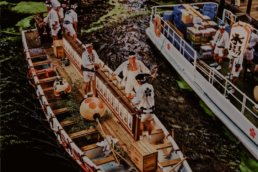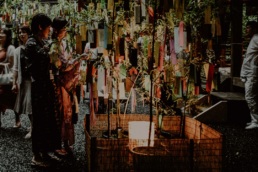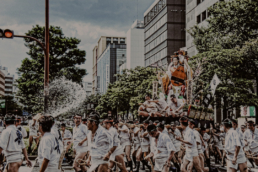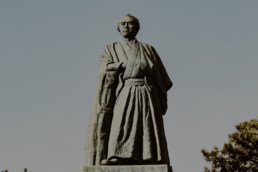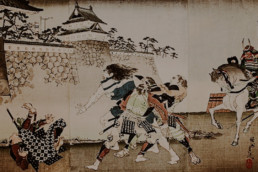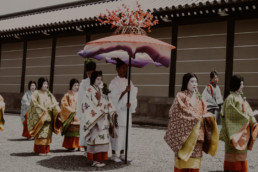Japan Tradition: Tenjin Matsuri
The Japanese summer is characterized by the famous matsuri, including the Tenjin Matsuri (天神祭) of which we speak today.


photo credits: Pic tures, jtabn99
Ranked as one of the three largest Matsuri in Japan, Tenjin Matsuri takes place in Osaka. It started in the 10th century, but today it takes place between 24 and 25 July each year. However, the major celebrations take place on the second day, including the procession along the river together with the fireworks display.
This particular festival is dedicated to the Tenmangu Temple and its main deity Sugawara Michizane, God of scolars. Like other famous matsuri (Gion Matsuri di Kyoto and Kanda Matsuri di Tokyo) also here the festivities begin in the temple.
Le festività


It all starts with the opening ceremony. Here the deity is invited to leave the temple and then a parade begins. The inhabitants of Osaka entertain the divinity with exuberant festivities, before bringing it back to the temple.
This becomes an opportunity for everyone to fully enjoy the hot days of summer. In fact, you can see people wearing traditional costumes and spectacular parades.
The Tenjin Matsuri in detail
As we have said, the Tenjin Matsuri takes place over two days. The first day, on the morning of July 24th, the festival begins at the Tenmangu Temple. Here people gather for a traditional ritual and then move on to pray by the river. The inhabitants of Osaka in this way in fact ask for prosperity and security for their city.
In the afternoon of the same day, the drums are played by men with big red hats. This serves to inform the population that preparations for the festival are complete.
However, the culmination of the celebrations takes place at 3.30 pm on the second day, July 25th. At this time, the drum players with red hats lead the procession.
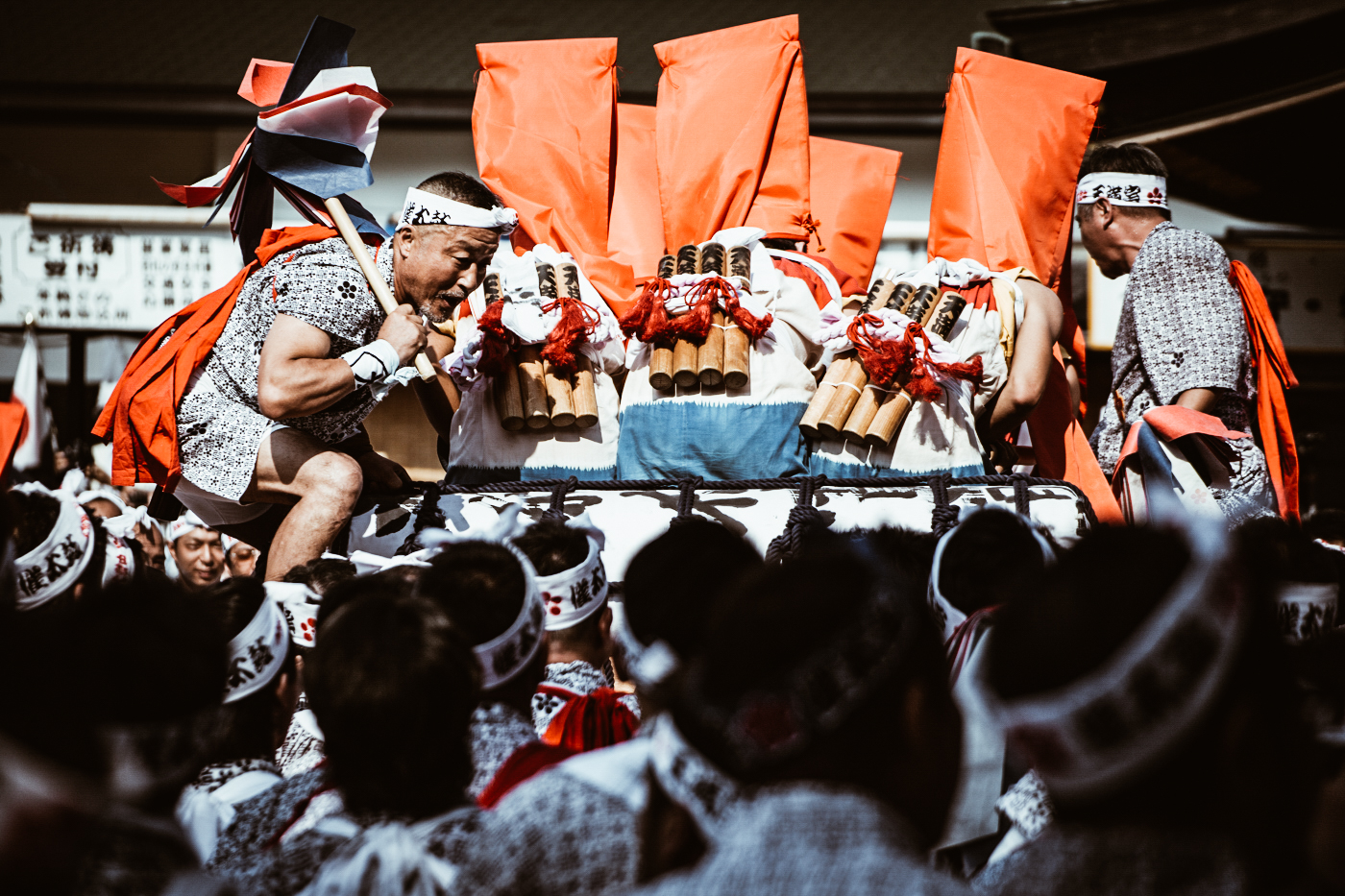
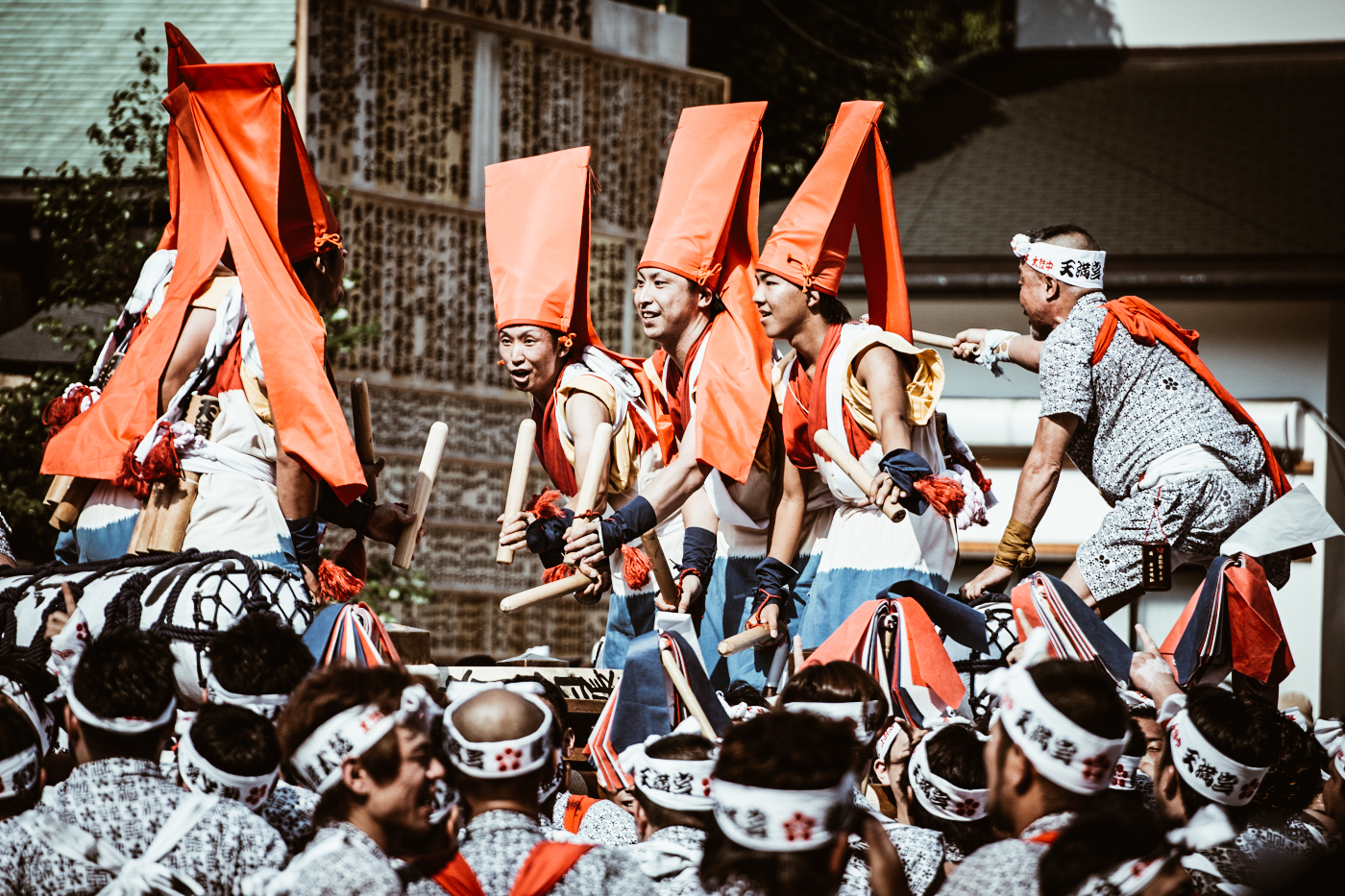
photo credits: hyossie
Starting from the Tenmangu Temple, the parade crosses the streets of Osaka. In this long procession, we find characteristic masks. We cannot fail to mention the Sarutahiko, a long-nosed goblin riding a horse. These masks are accompanied by inflatables, festival music, dancers of various kinds and other attractions.
An hour after the procession begins it is time for the mikoshi to leave the temple. This "portable temple" contains within it the deity Sugawara Michizane. On this occasion, the mikoshi follows a girl and a boy who have the task of guiding a sacred ox, the messenger of Michizane. During the parade other mikoshi appear, but if you want to see the one dedicated to Michizane, keep your eyes open for the temple with the phoenix.
At 6 pm, the parade arrives at the Okawa river. Here the people and the mikoshi are loaded onto the boats to continue the parade on the river.


photo credits: jtabn99, pasteis de nata
The Tenjin Matsuri and the "stage boats"
It is also possible to find "stage boats". In fact, on some of these boats, it is possible to watch performances of the traditional Noh and Bunraku theater. Moreover, in the midst of all these boats, you can also see the Dondoko, small boats that easily navigate the river thanks to young rowers.
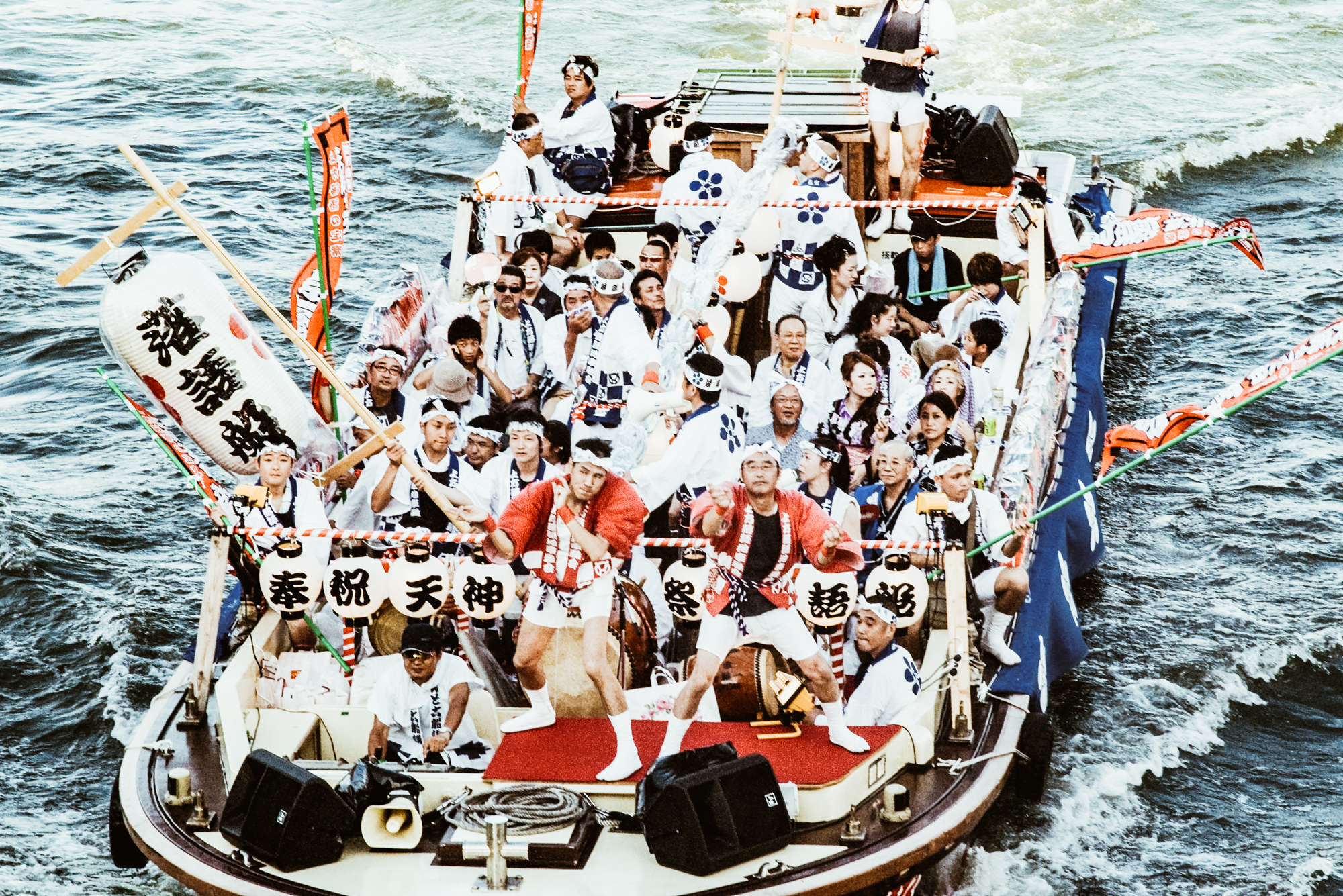
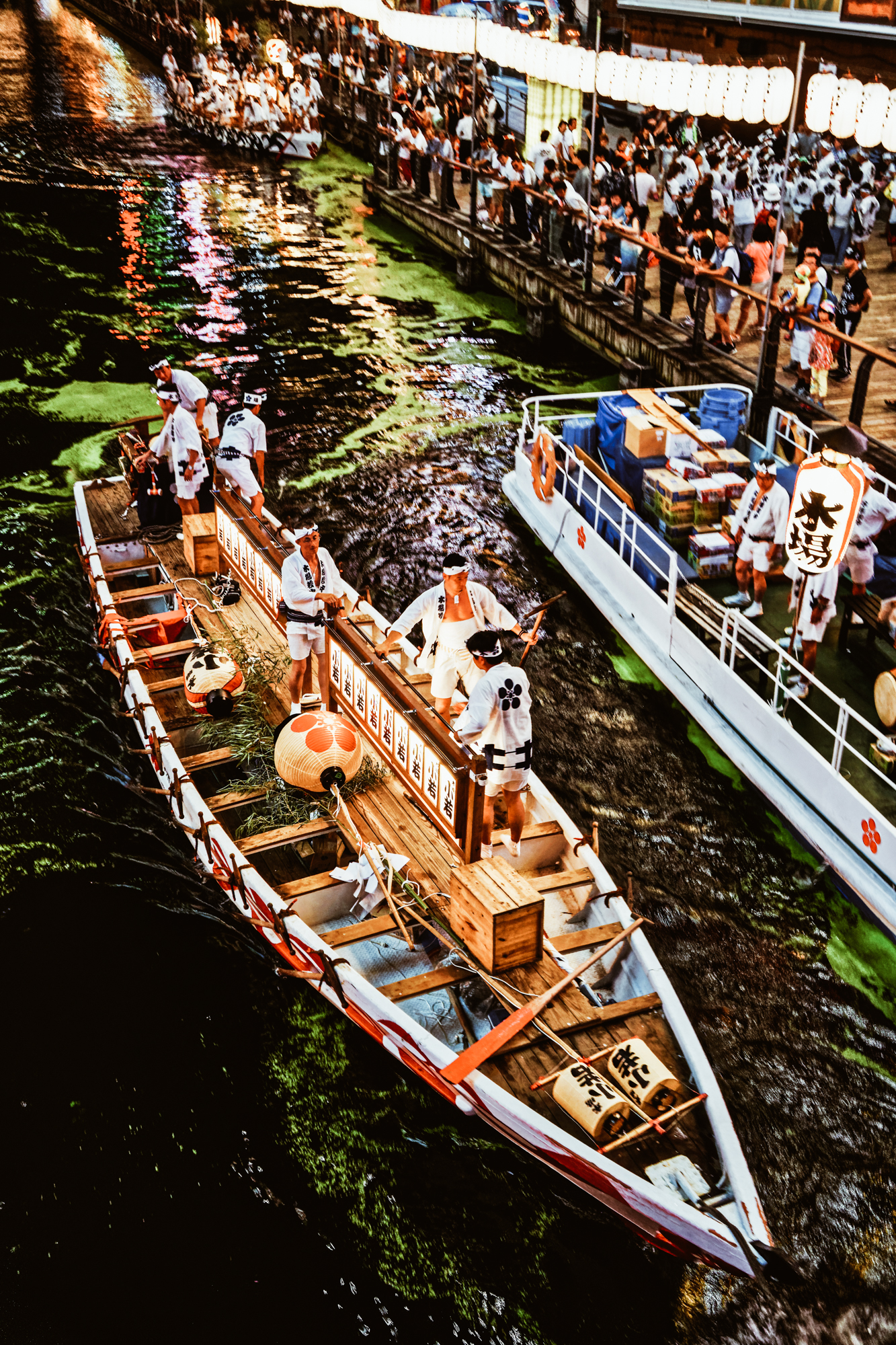
photo credits: elmimmo, wolf4max
We cannot then forget the endless delights of street food in Osaka, an extremely famous city for its food.
The procession continues while the celebrations go on during the evening. The climax is reached again from 19:30 to 21:00 when the fireworks show begins. Japan is known, it is famous for its fireworks show. However, those of the Tenjin Matsuri along with its illuminated ships reflecting on the river, offer a unique show of its kind.
After the end of the fireworks, the mikoshi land and return to the temple at 22:00, marking the end of the festival.
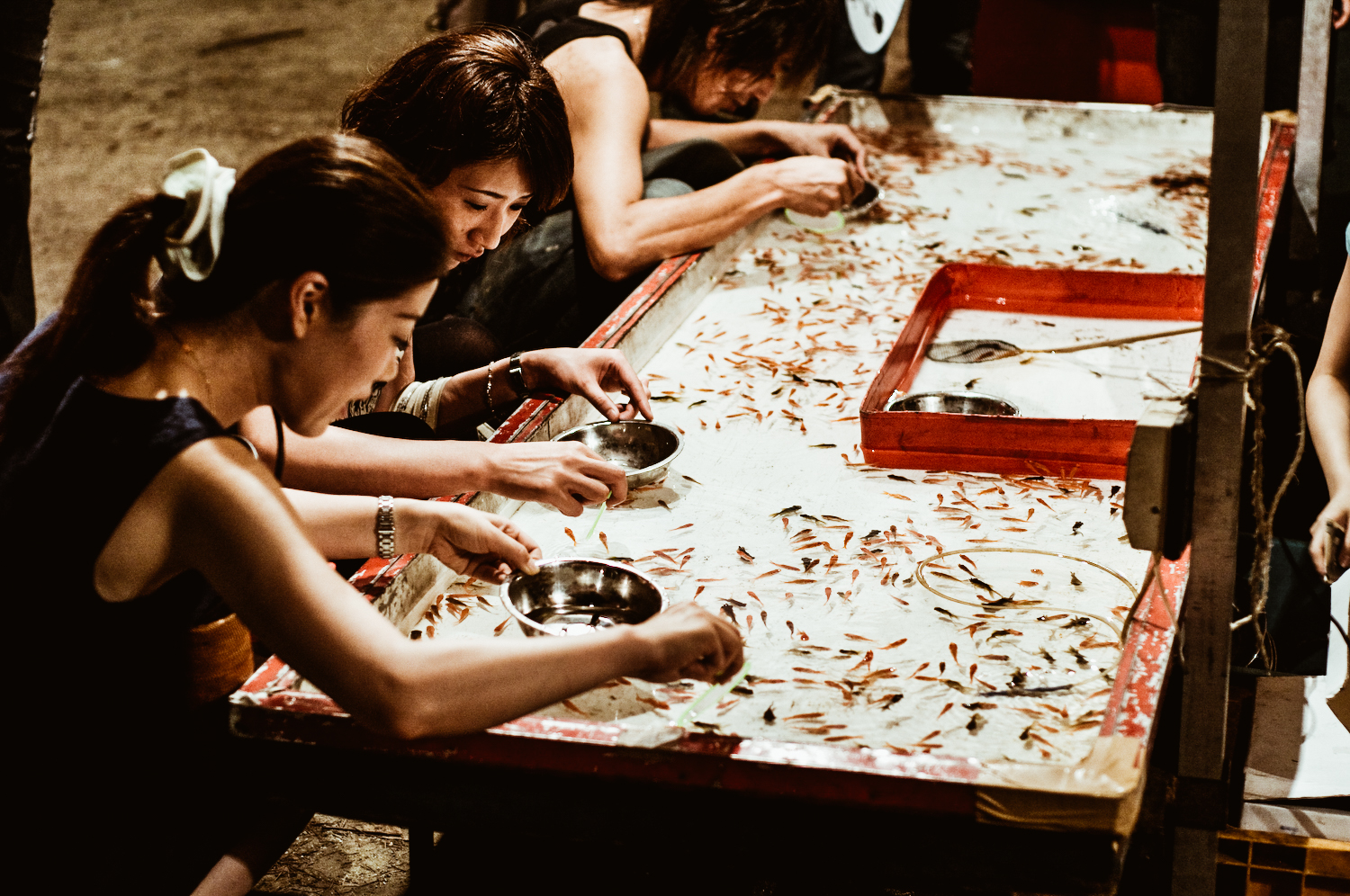


The turnout
Tenjin Matsuri is usually one of the busiest times of the year, especially along the banks of the river during the evening show. In fact, to watch the fireworks show it's really hard to find the right place to fully enjoy the show.
However, there is the possibility of purchasing tickets for seating located near Temmanbashi station. The cost is about ¥6000 and requires reservations in advance. This will allow you to have a good view of the procession but not a perfect view of the fireworks.

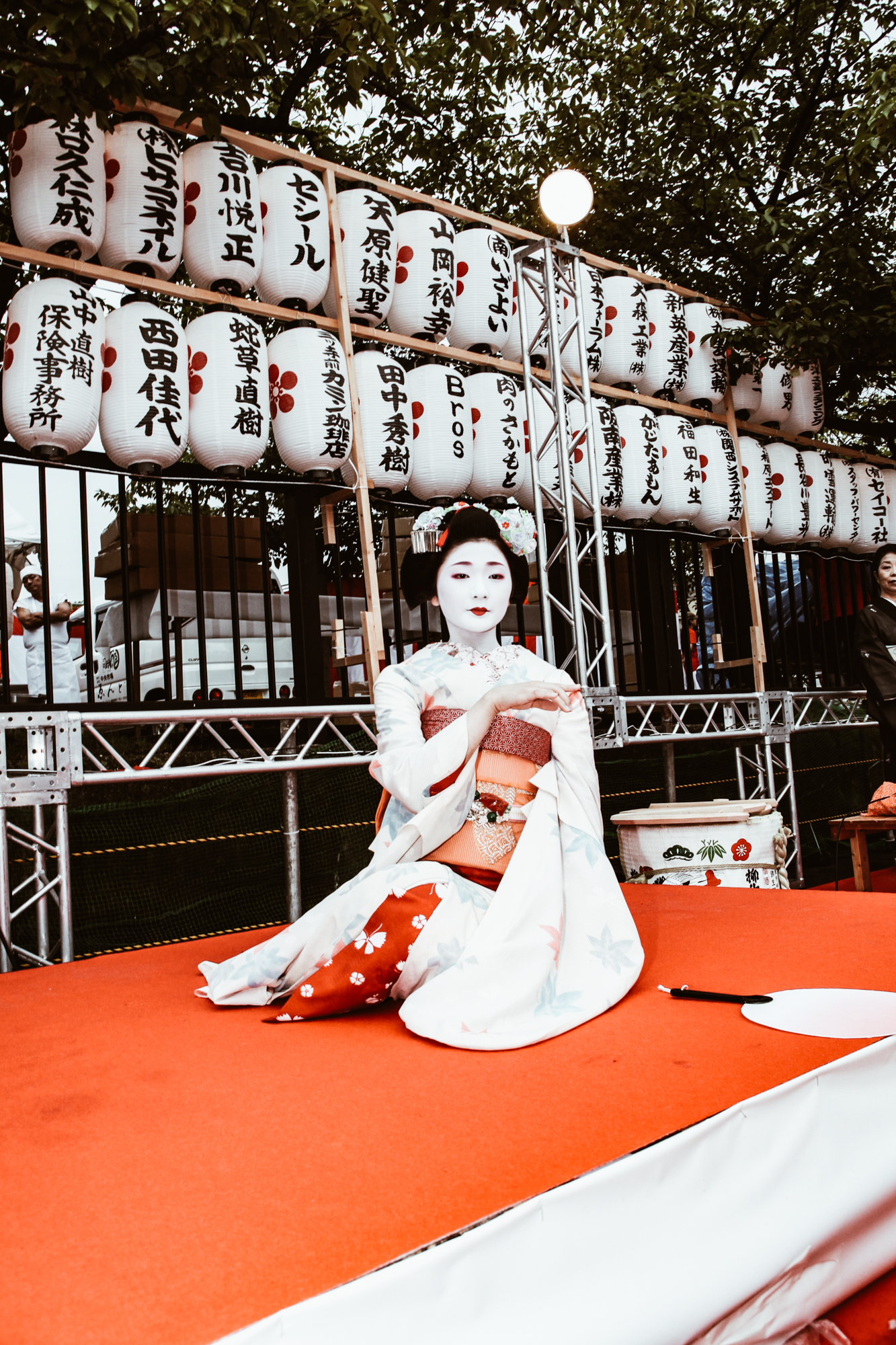
photo credits: japannewbie, Mi-Shin Shinoyama
The bridges along the Okawa River are closed during the parade and offer a privileged place as a viewing spot. However, visitors cannot stay long to ensure smooth traffic for all those present. Instead, the Kawasaki bridge is also closed to the public also because common people are not allowed to look at the temple deity from above.
The town decorated
During the Tenjin Matsuri, Osaka is decorated with thousands of colors, lights, torches, and lanterns all along the city center. A show not to be missed for both locals and tourists!
If you have witnessed past matsuri or are planning to attend the next one coming, let us know what you think!

photo credits: Laura Barrio
Tanabata, the legend and modern times
Tanabata: on the seventh day of the seventh lunar month we celebrate one of the five gosekku (五節), the most important festivals of the year. This is also one of my favorite parties because it is extremely romantic.
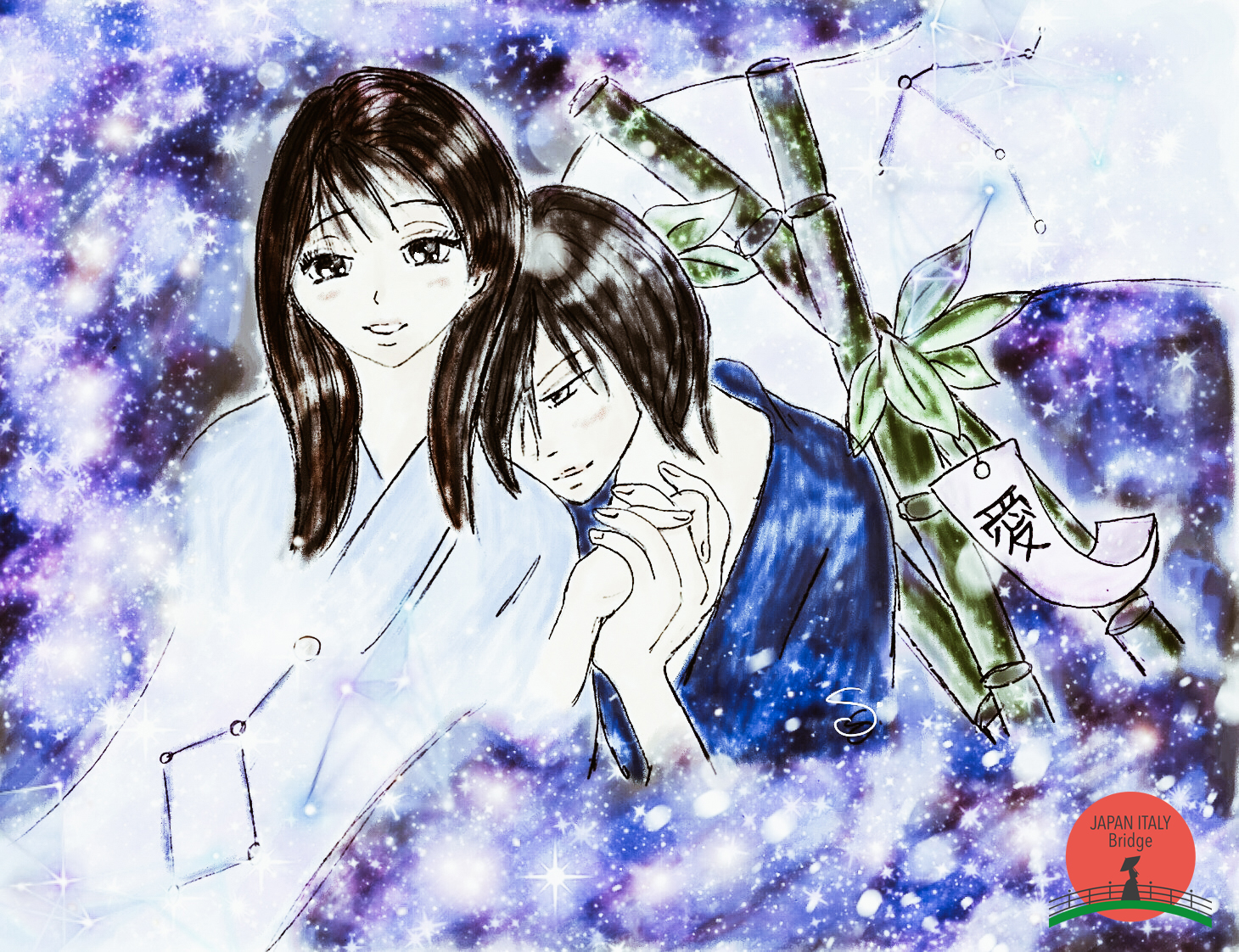
The Seventh Night
The legend tells of Princess Orihime (the star Vega), devoted daughter of Tentei (the King of the sky) who spent her day weaving on the shores of the celestial river Amanogawa (the Milky Way). However, her heart was sad because she had not yet known love. Then Tentei introduced her to Hikoboshi (the Altair star), a young herder of the heavenly planes who lived across the river. The love between the two exploded immediately, but the passion distracted them from their duties by unleashing the wrath of Tentei.
He divided them by returning his daughter to the opposite bank of the river. Orihime, destroyed by pain, wept a thousand tears. Tentei, struck by his daughter's great love, allowed the two lovers to meet on the seventh night of the seventh month only if they worked diligently throughout the year. The sky, in this special night, must be clear, otherwise crossing the silvery river would be impossible. In fact, if it rained it would swell and the vigor of its waters would prevent the flock of magpies from creating a bridge with their wings to allow the two lovers to hug again.
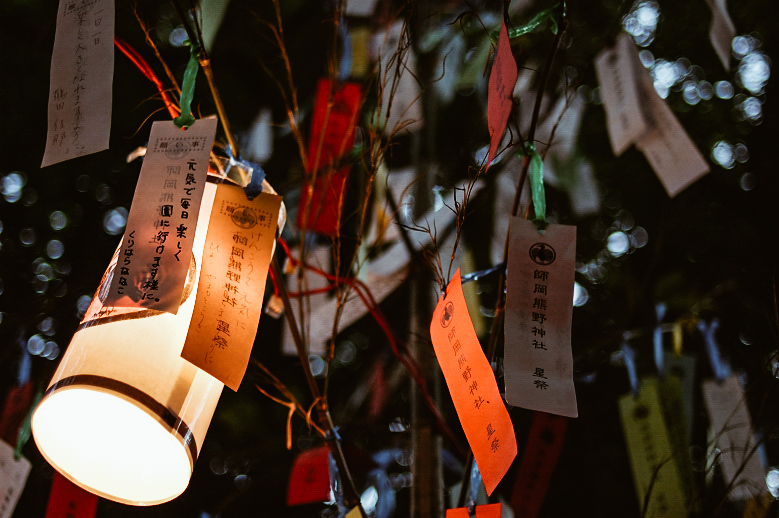
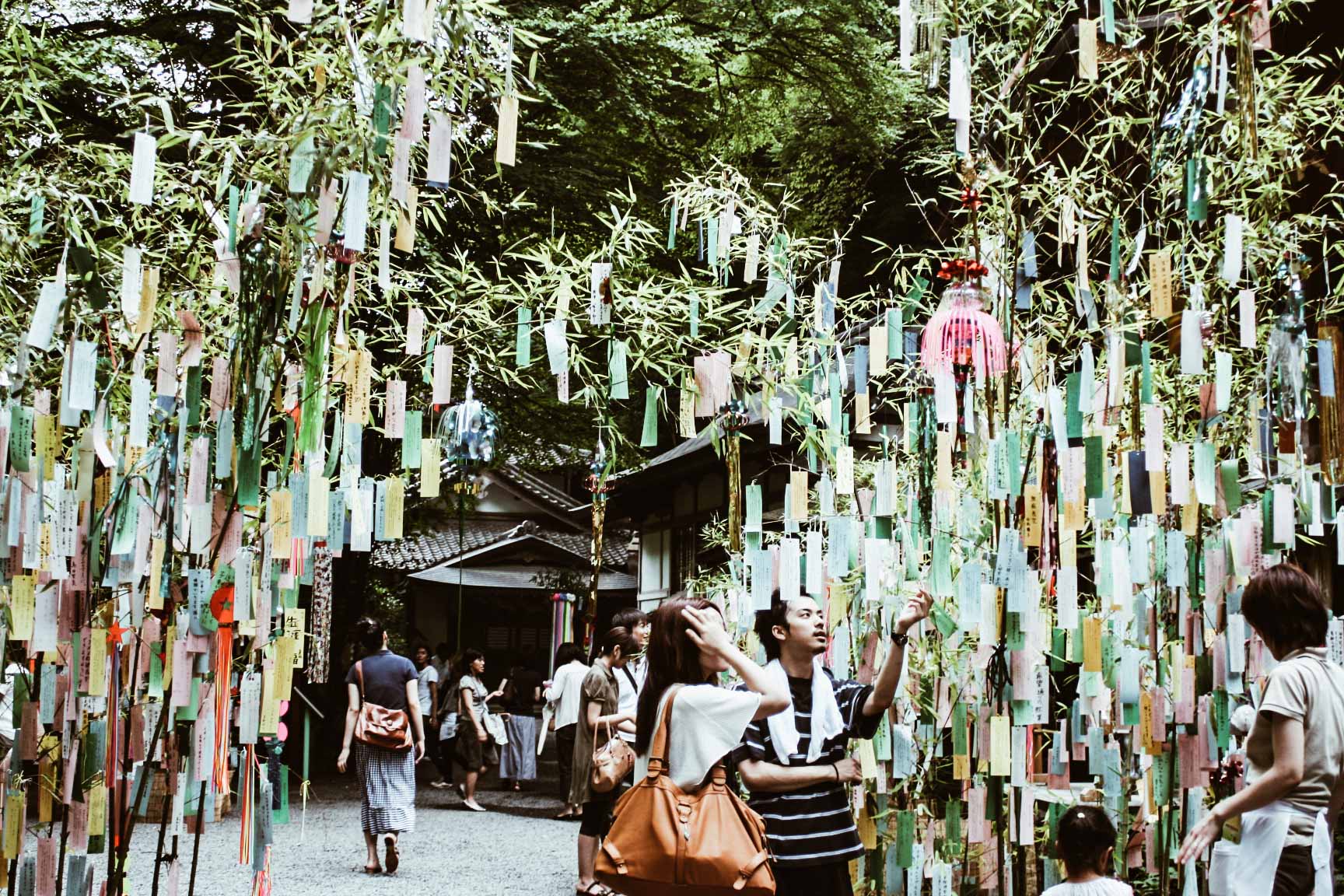
From Shichiseki to Tanabata and the customs of the festival
Tanabata was not the original name of this holiday. In ancient times it was known as Shichiseki, deriving from the reading of the Chinese kanji, from which it originates. In fact, the festival was imported from China by Empress Koken in the Kyoko Imperial Palace in the Heian period. It then spread throughout Japan in the Edo Period and has since become one of the most popular festivals.
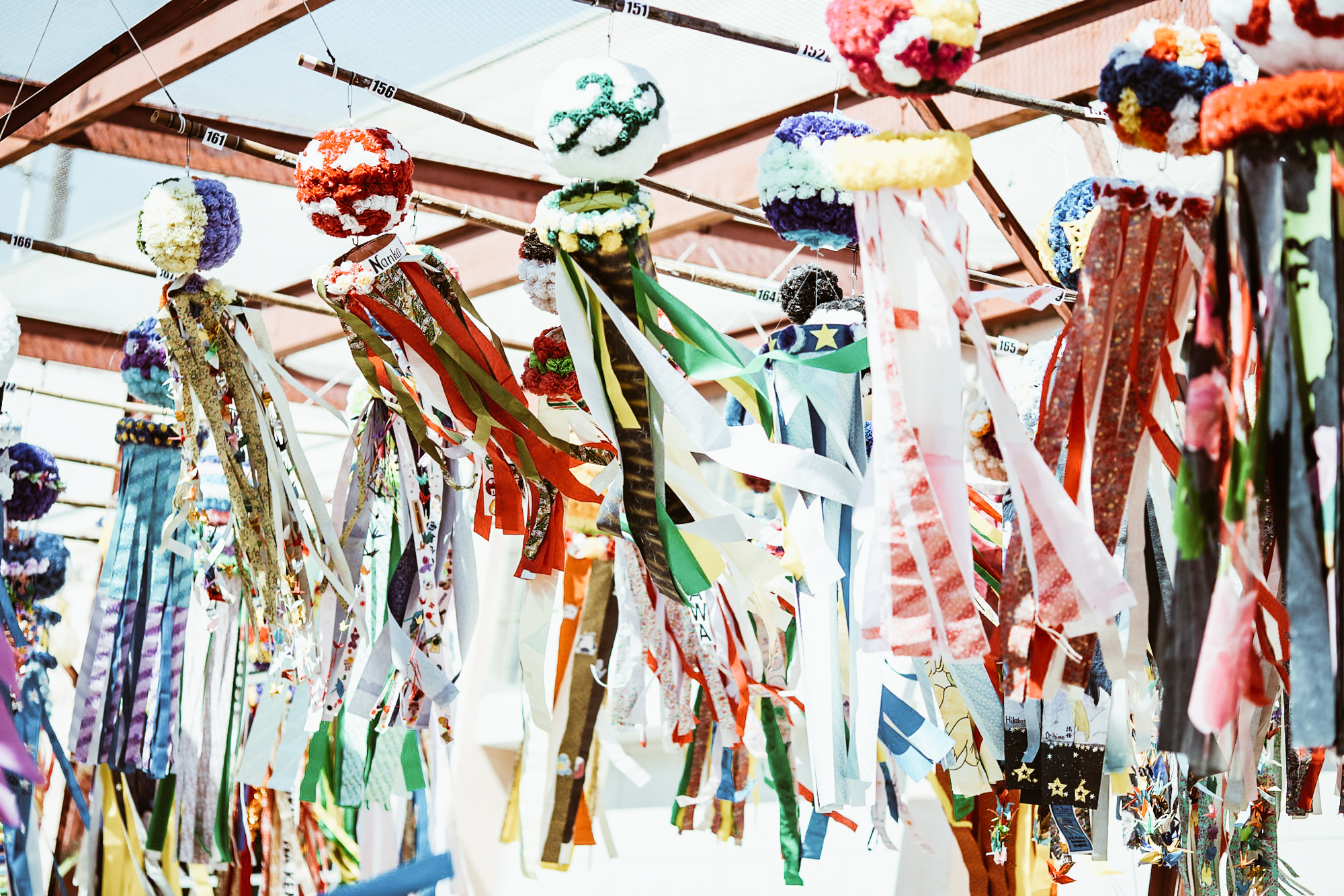

The decorations of the Tanabata
Between July 6 and August 8, according to the region, the streets are filled with zen-washi (paper lanterns) and people wear yukata (浴衣). The latter is a very informal kimono with wide sleeves and flat seams, made of cotton, without lining and therefore suitable for the summer. But the tanzaku (短冊) are the real protagonists of this enchanted night. Strips of colored paper that symbolize the silk threads woven by Orihime and on which prayers or wishes are written. Later these are tied to bamboo branches, considered the main symbol of the Tanabata. In this way, the wind, blowing through the leaves, brings with it the desires and realizes them!
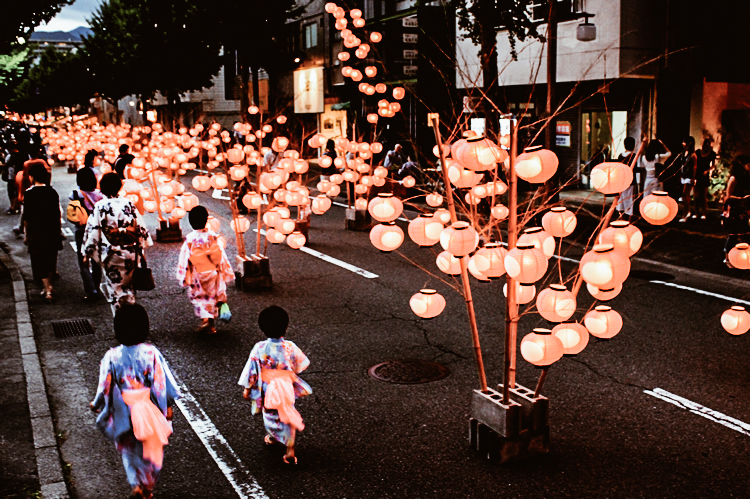
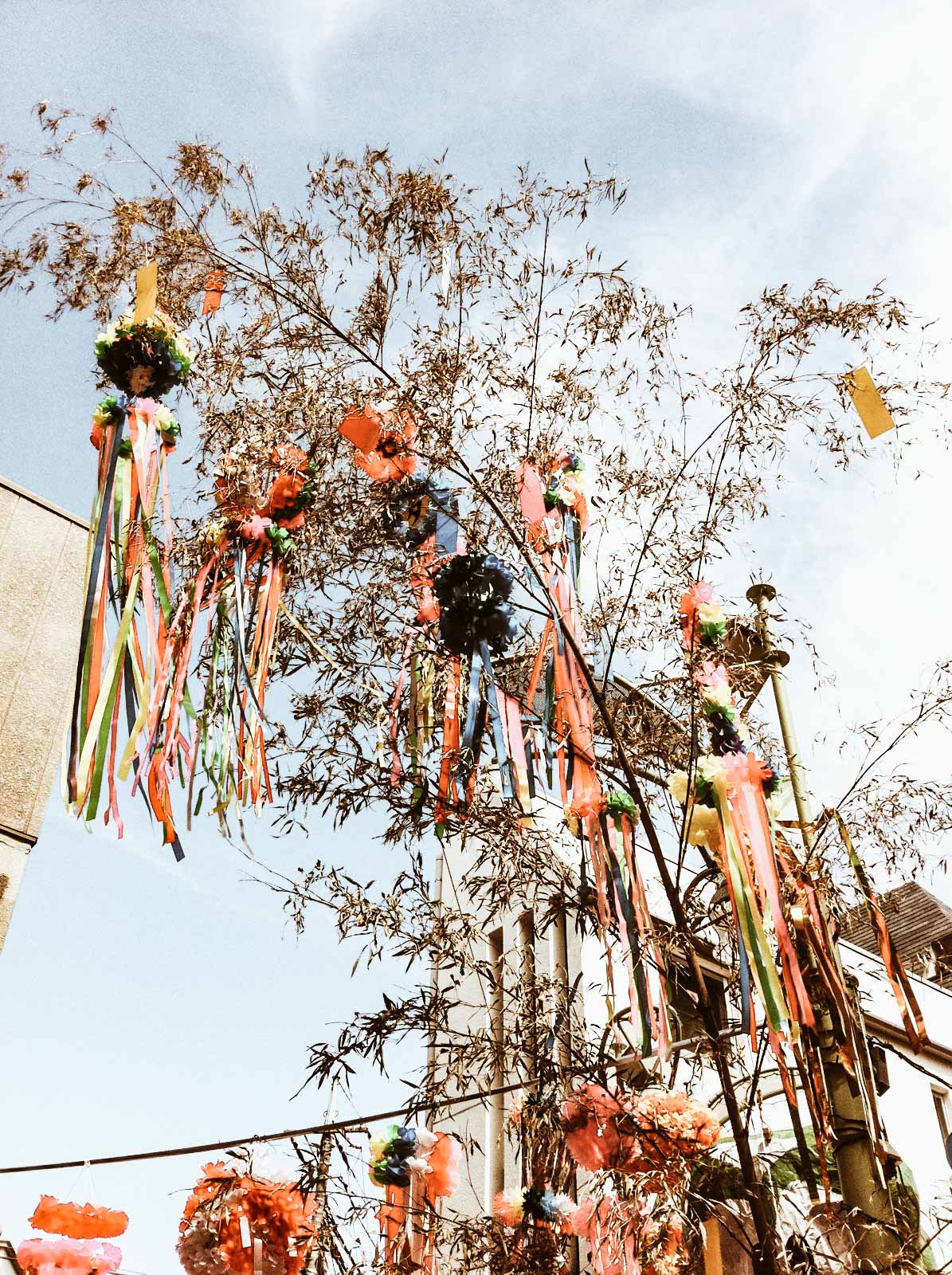
photo credits: savvytokyo.com, Hiroshi
As many auspicious decorations appear in the parades during the matsuri. There are Kamigorono (special paper kimonos) that protect against illness and accidents. We can also find toami, fishing nets whose exposure would bring good luck in fishing and in crops. Not to mention the fukinagashi, colored stripes like the fabric that Orihime wove. We then continue with the beautiful orizuru (origami) especially in the shape of a crane, bringing health, protection and long life to families. The kinchaku, small bags that bring good business and wealth. We also have the famous kusudama, oval-shaped ornaments composed of a series of origami sewn and glued together. Then we come to the kuzukagos, garbage bags that symbolize "cleanliness" (understood as purity) and prosperity.
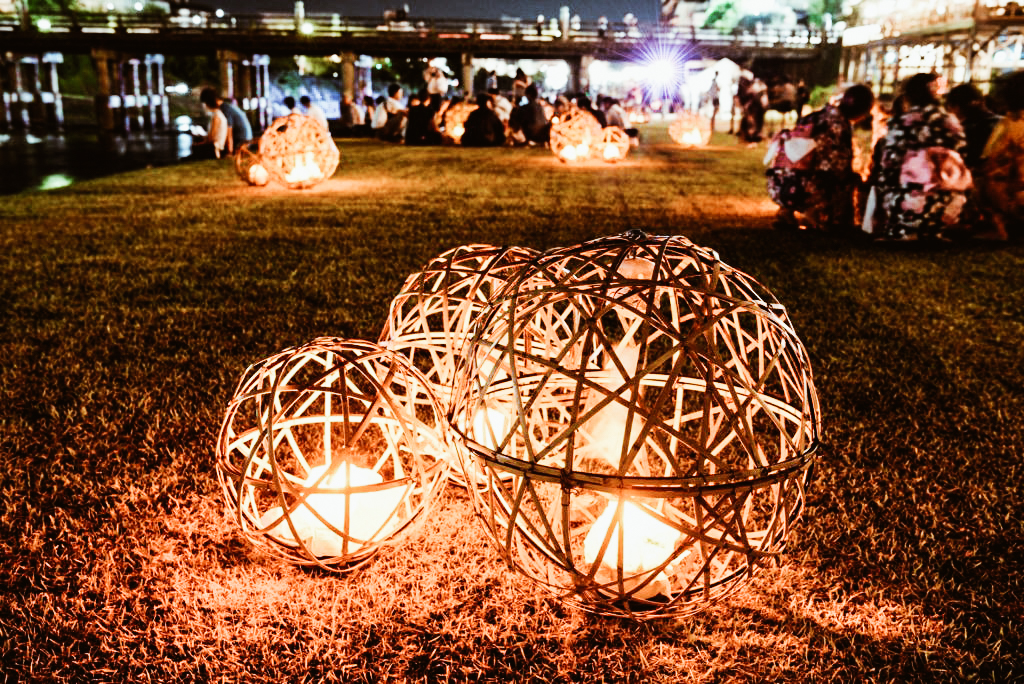
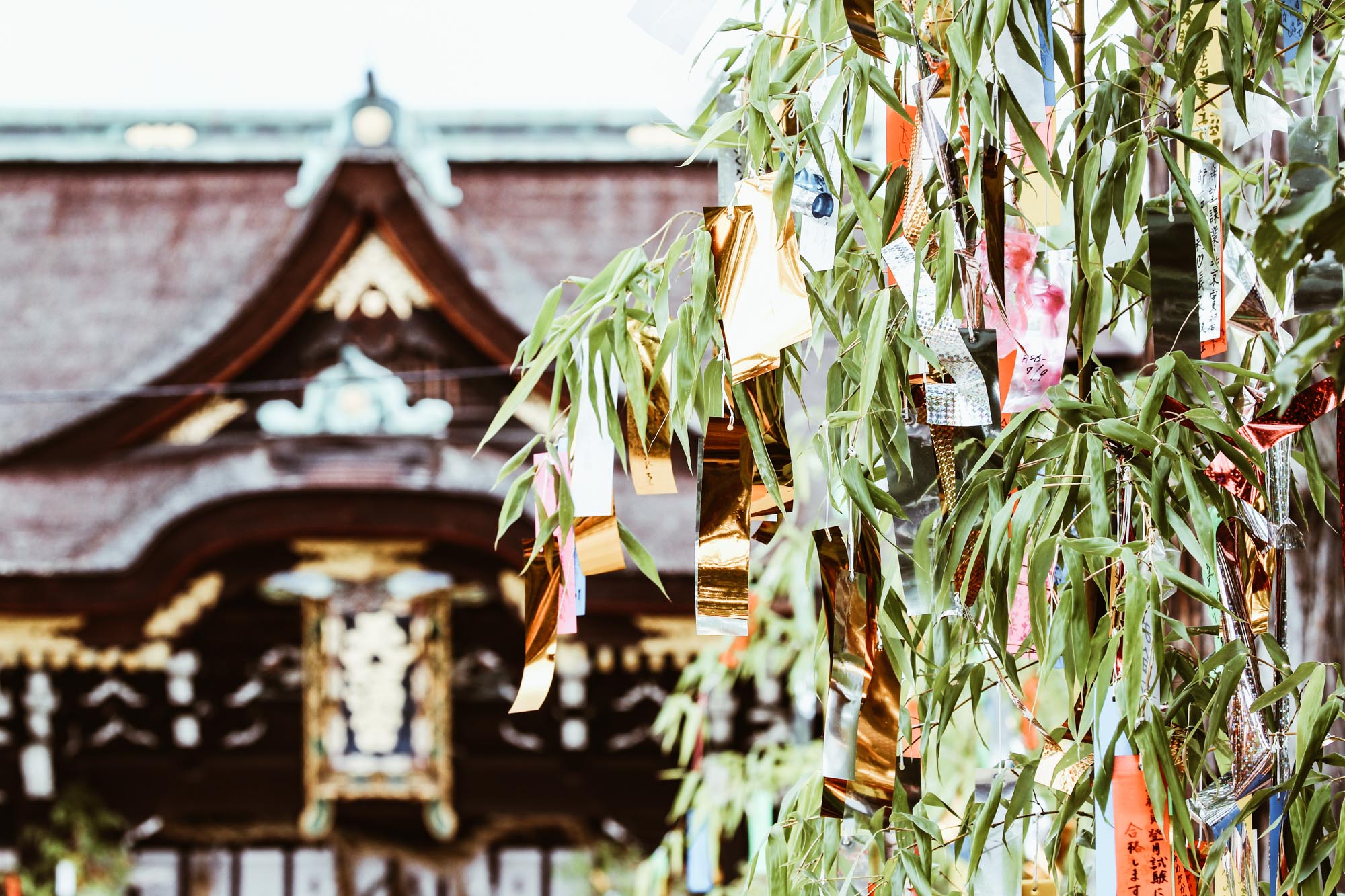
photo credits: savvytokyo.com, Naomi Nakagawa
To each region its date
As we said, the date of the Tanabata varies according to the region. In the Kanto region, The Tanabata of Hiratsuka, in Kanagawa prefecture, takes place between 4 and 6 July. In the region of Chūbu in Ichinomiya, in the Aichi prefecture, it is celebrated between 24 and 27 July. finally, in the region of Tōhoku, in Sendai, in the prefecture of Miyagi, it takes place between 6 and 8 August.
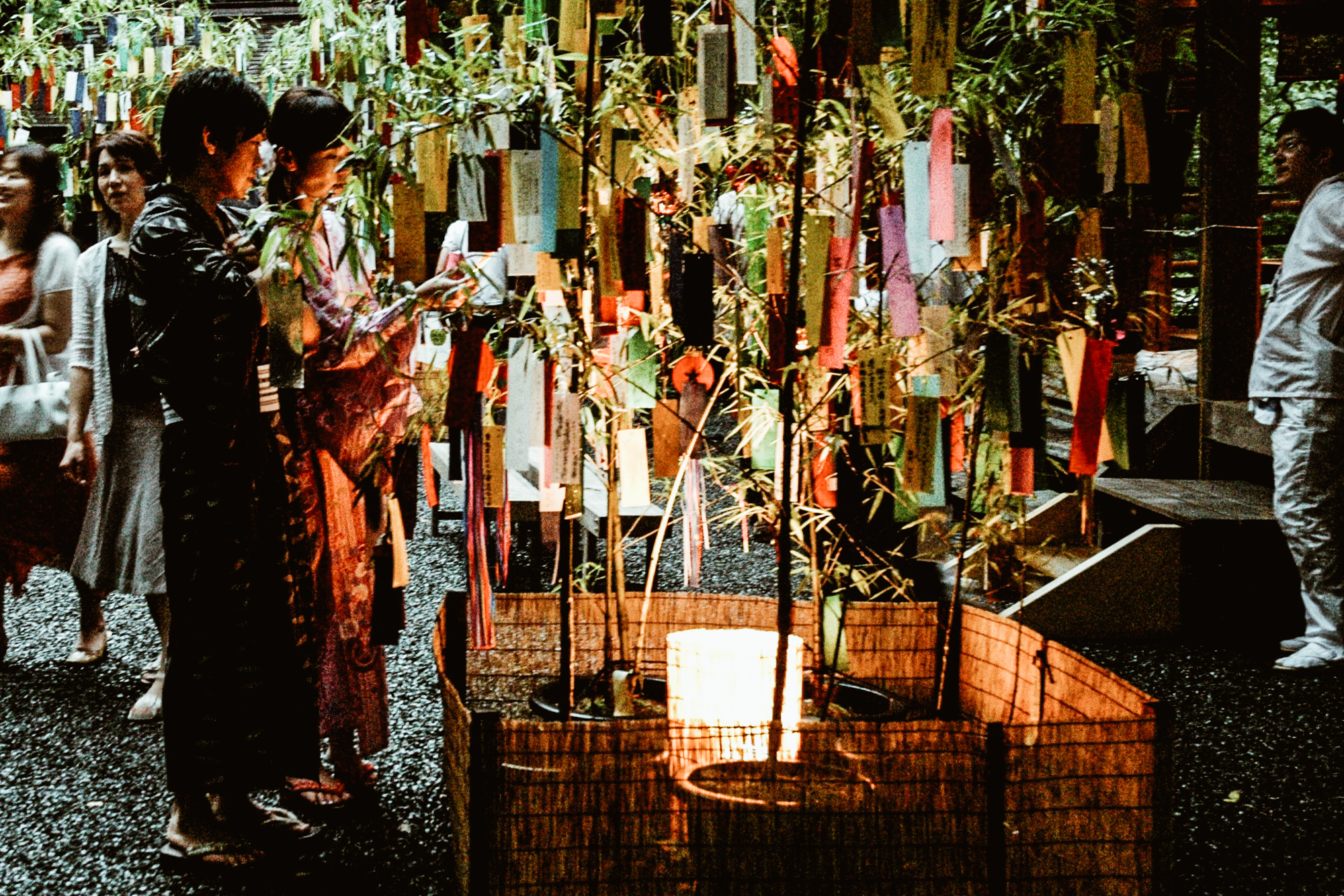
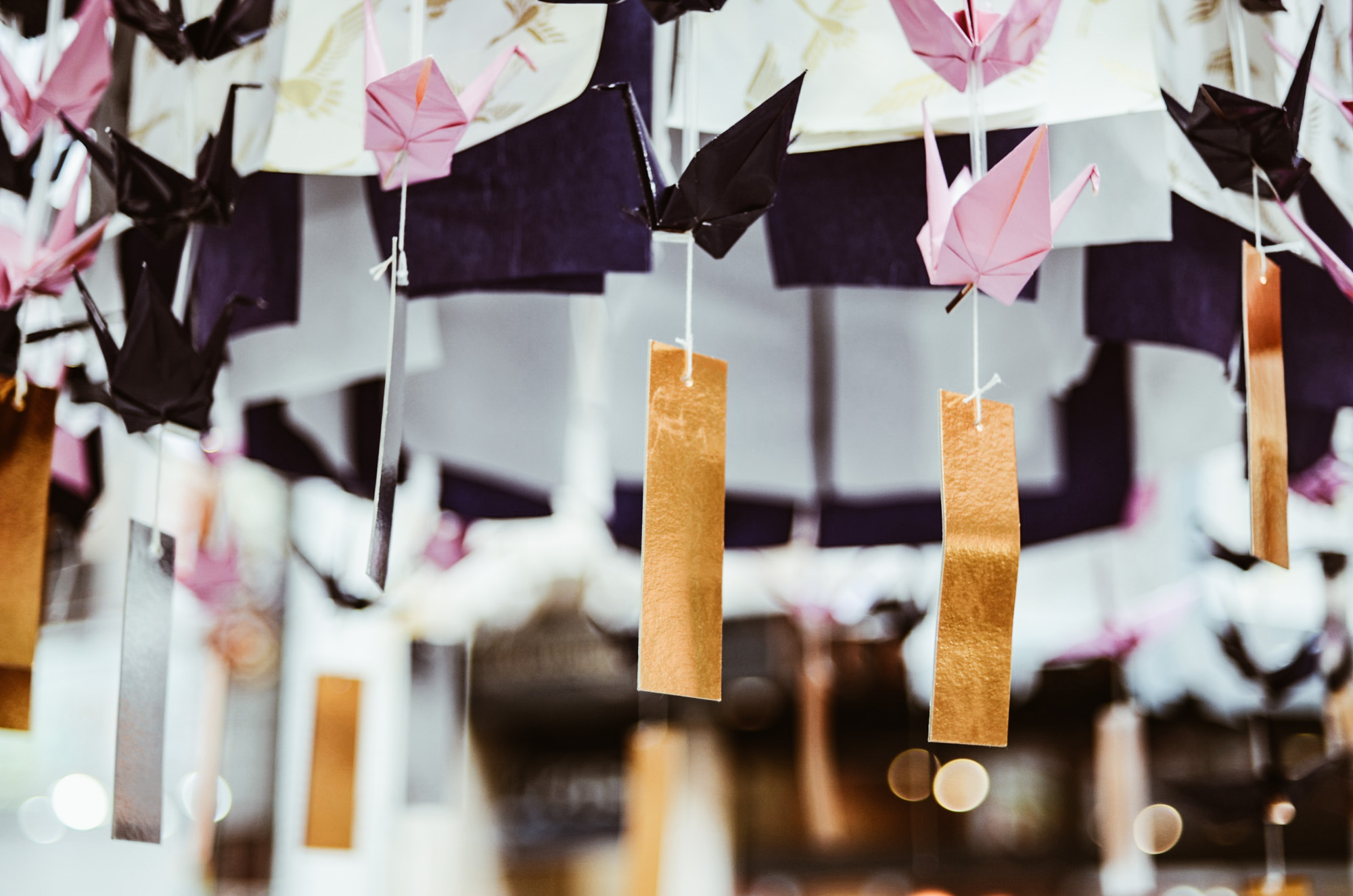
photo credits: japancheapo.com, EriTes Photo
Even if love is a feeling that always deserves to prevail, during this time of the year the idea of raising one's eyes to the sky and desiring with all one's heart something with the hope that it will come true, is always exciting. Each Tanzaku is special and it is wonderful to read people's dreams and wish them to be heard. This, in fact, is one of the many moments of altruism that can only be shared in Japan.
And you? What dream do you keep in your heart? Whatever it is, find the way to come true! And if you are around Milan, we recommend you to come and celebrate the Tanabata from TENOHA Milan. Ready to hang your tanzaku? We have already done it!
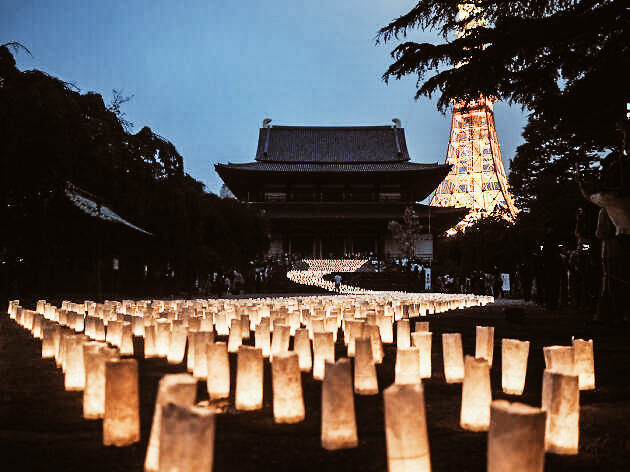
photo credits: timeout.com
Hakata Gion Yamakasa Matsuri
Every festival in Japan is overly attractive, especially the Hakata Gion Yamakasa Matsuri. Traditions so different and distant from ours that they deserve to be lived at least once. Colors, vivacity, and spirituality are mixed in a vortex of emotions that only the Rising Sun is able to offer.
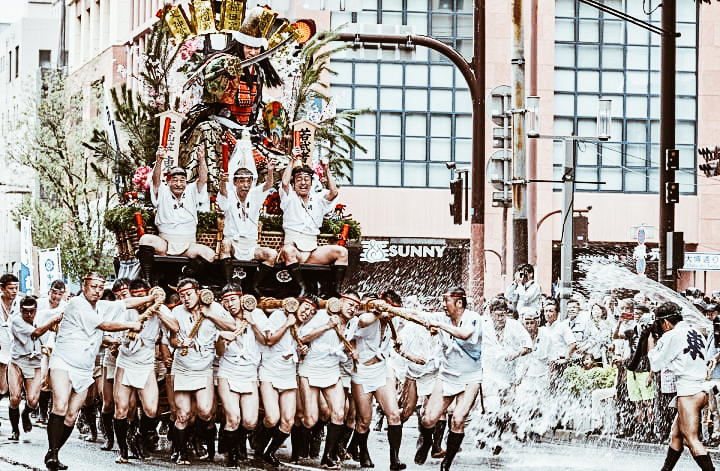
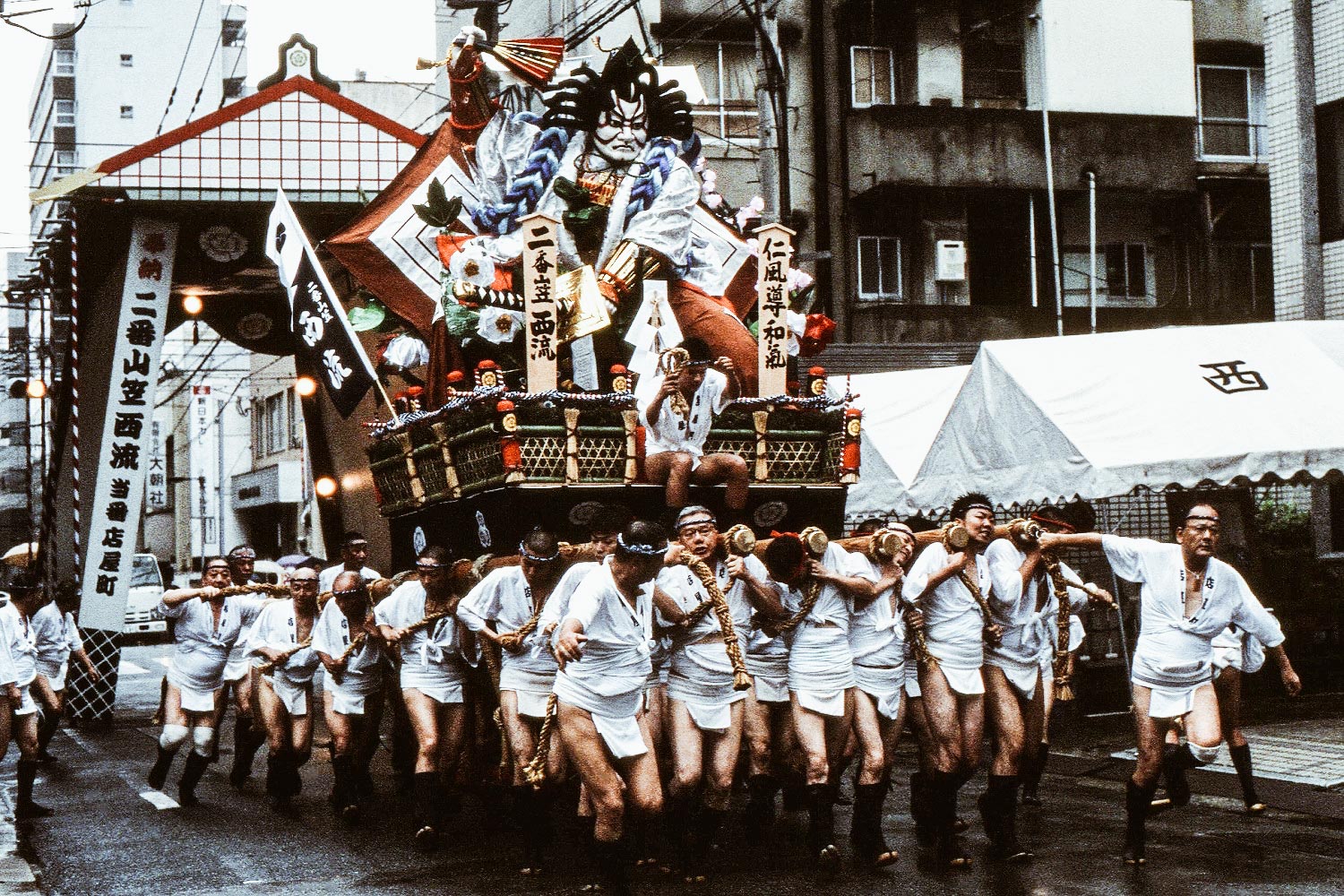
photo credits: matcha-jp.com, gaijinpot.com
The intangible cultural heritage of sacred origins
For more than 700 years, Hakata Gion Yamakasa has been celebrated in the Hakata (Fukuoka) district from 1 to 15 July. Designated as "intangible cultural heritage" by the Cultural Affairs Agency, this festival has its origins in the 13th century when a plague epidemic struck the city. The population turned to the Buddhist monk Shoichi Kokusgu to pray for the plague to end. The monk was let up on a platform and was transported throughout the city by sprinkling the streets with sacred water. At the end of the tour, the platform was thrown away and the plague disappeared completely.

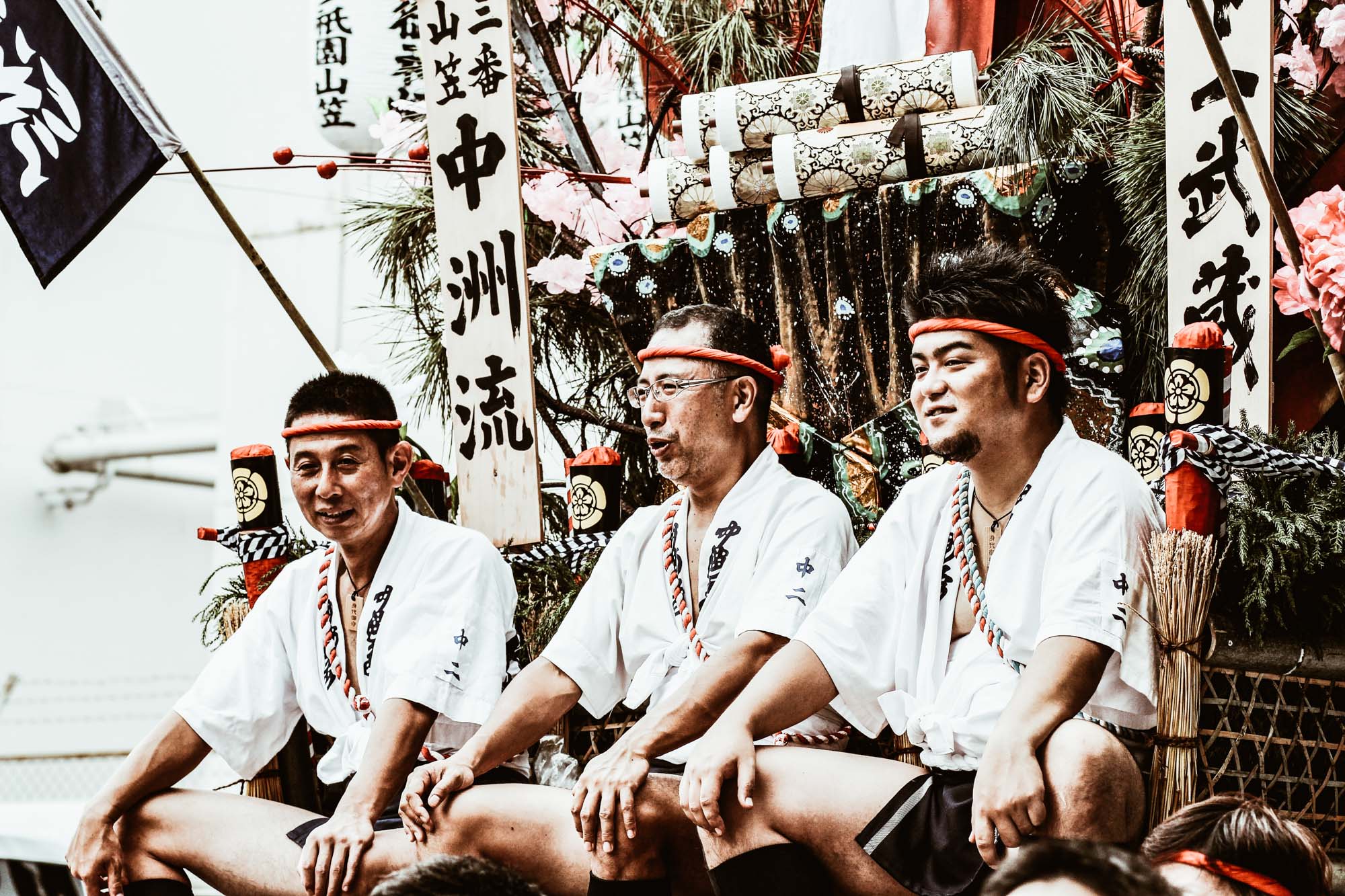
photo credits: Pascal, otsukarekun
Hakata Gion Yamakasa Matsuri: The unmissable demonstration of strength
In the period in which the festival takes place, the frenzy pervades the streets of Hakata discrict. In fact, more than one million people are preparing to attend the celebrations consisting of a chariot race!
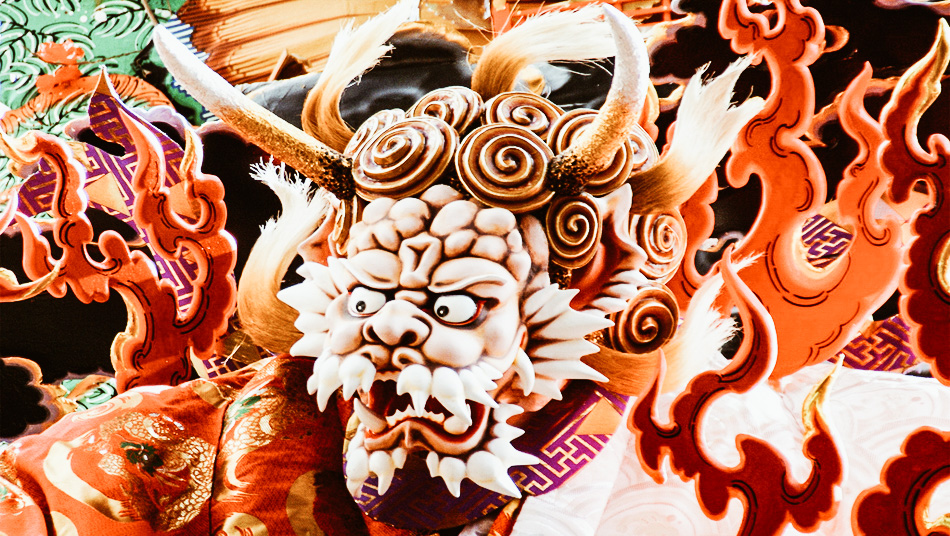
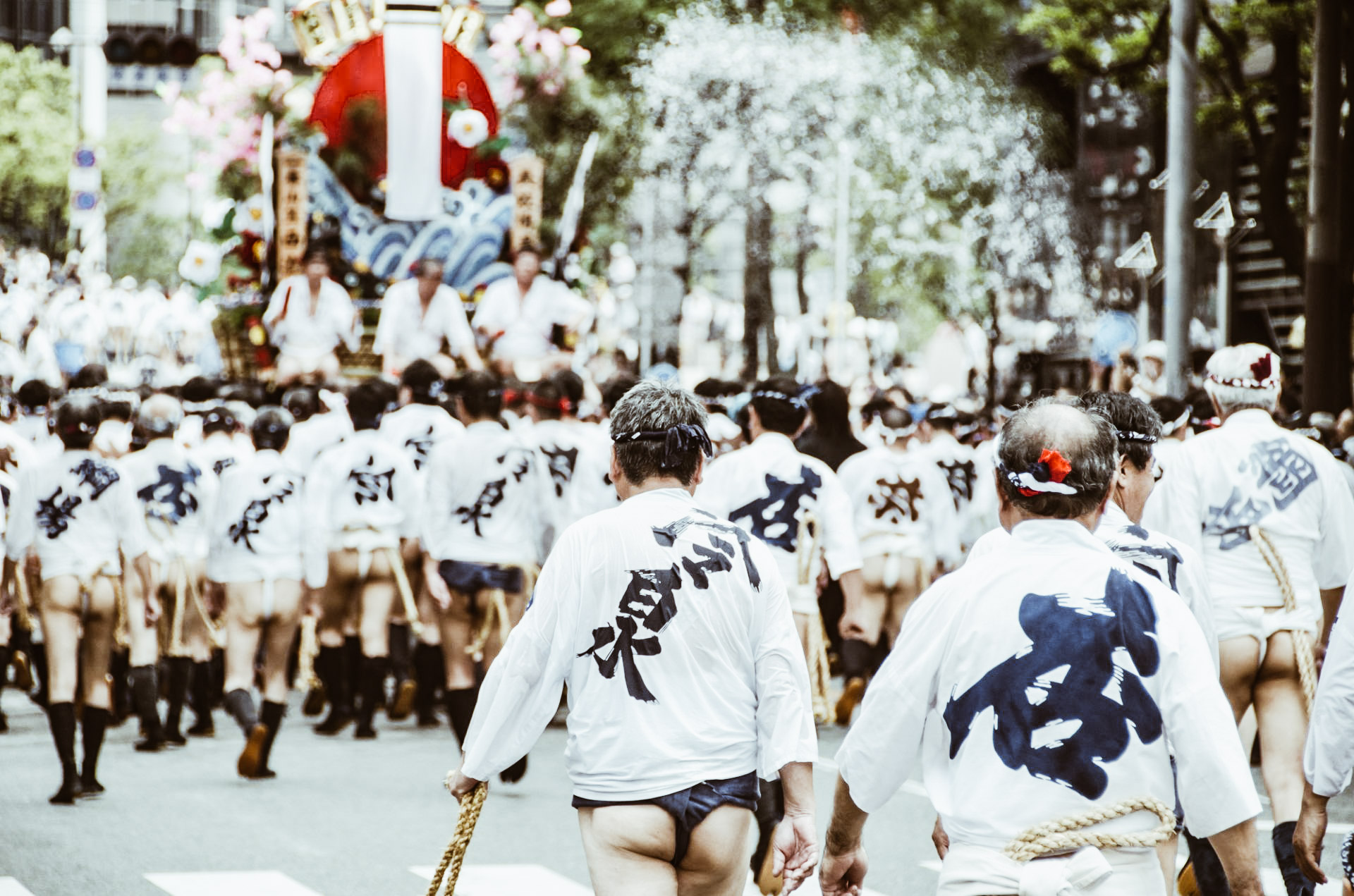
photo credits: japanbullet.com, goodlucktripjapan.com
The participants, who in this case are exclusively men, are organized in 7 Nagare (teams): Daikoku, Higashi, Nakasu, Nishi, Chiyo, Ebisu and Doi. On 1 and 2 July, each district carries its own richly decorated cart, the Kazariyama, which remains on display for a week. Thus the Oshioitori is celebrated, that is the purification of the members of the 7 Nagare. After the prayer, these teams then move from the Kushida temple and go to Hakozakihama beach. Here they take sand to applaud the setting sun. Each of them wears a Mizuhappi (a short jacket), a Shimekomi (the loincloth) and a Tenugui (a band on the head that changes color according to the role played).

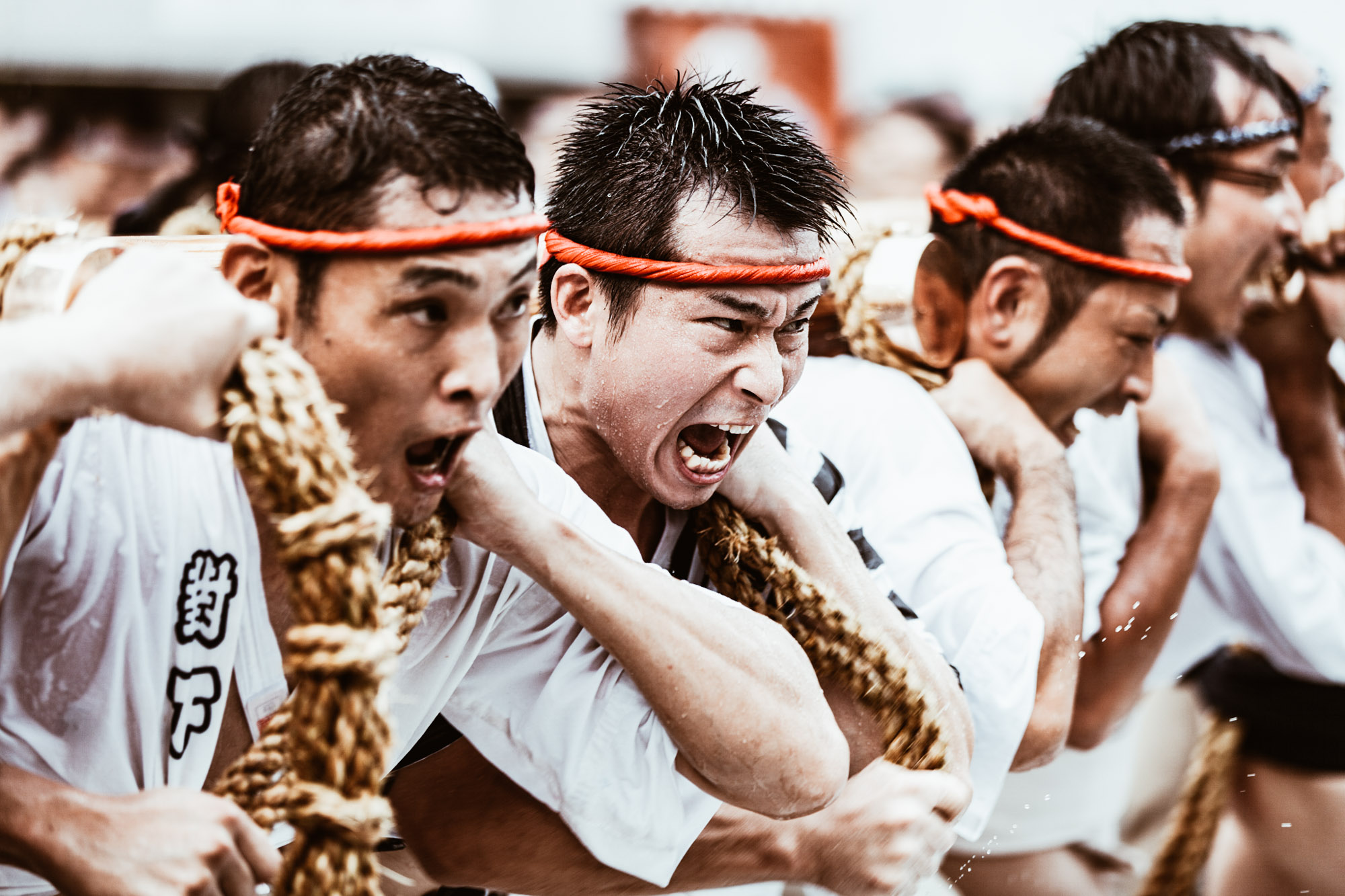
photo credits: shin7d
Training for the Hakata Gion Yamakasa Matsuri
Consisting of a race with wagons in which the winner will be those who have traveled 5 km in the shortest possible time, the participants must be ready for the grand finale. It begins with the Nagaregaki, the moment in which each team raises its wagon for the first time along the streets of its own district.
The next day is the time of the Asayama and the Tanagaregaki: the elderly receive the respect of the youngest and are able to sit on the Kazariyama transported in the opponents' neighborhoods.
The next day it is still the turn of the Oiyama-Narashi which starts precisely at 3.59 pm. This is a sort of general rehearsal in which the race is timed, thus increasing the tension and the spirit of competition that now begins to meander through the Nagare.
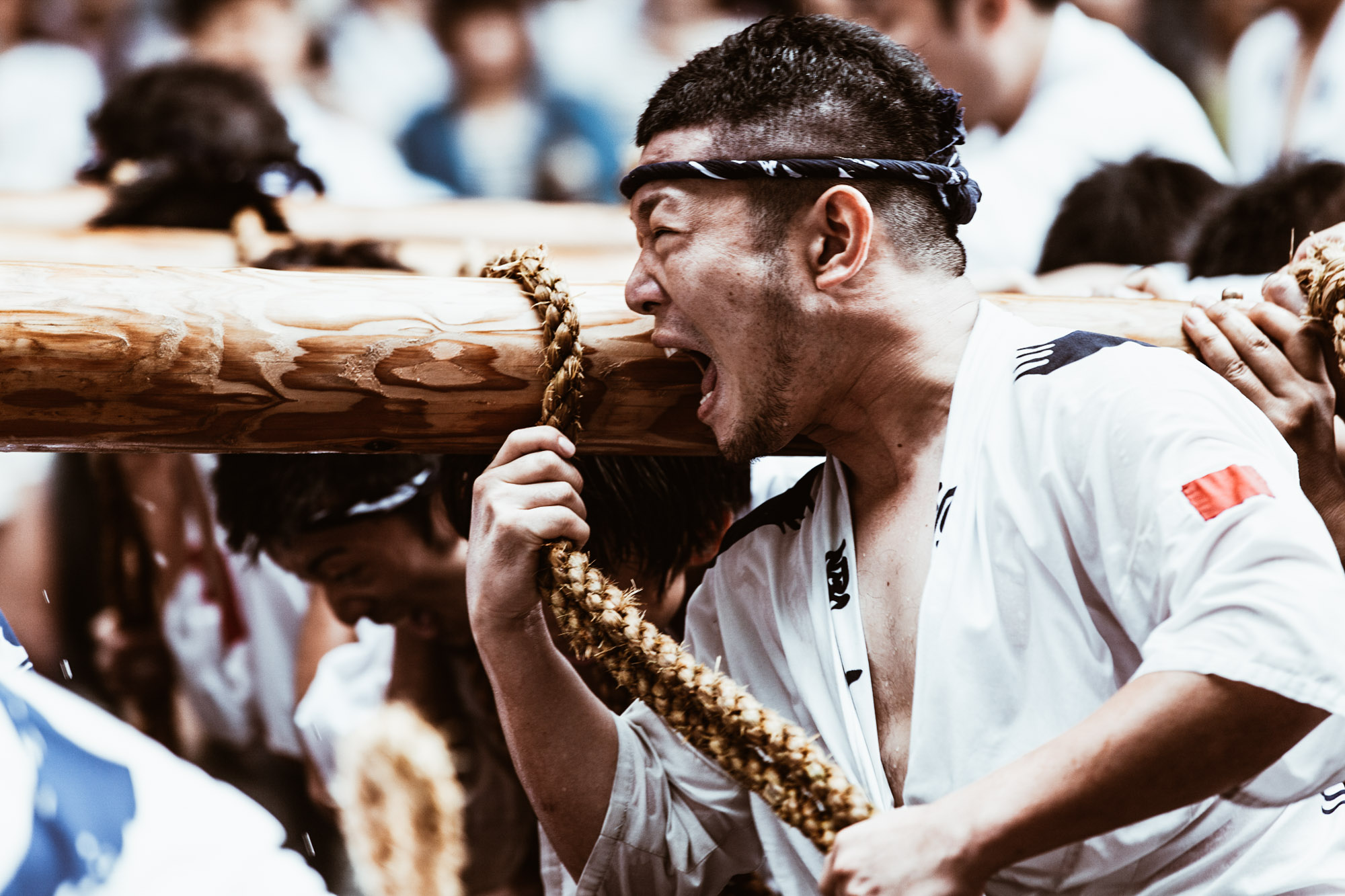
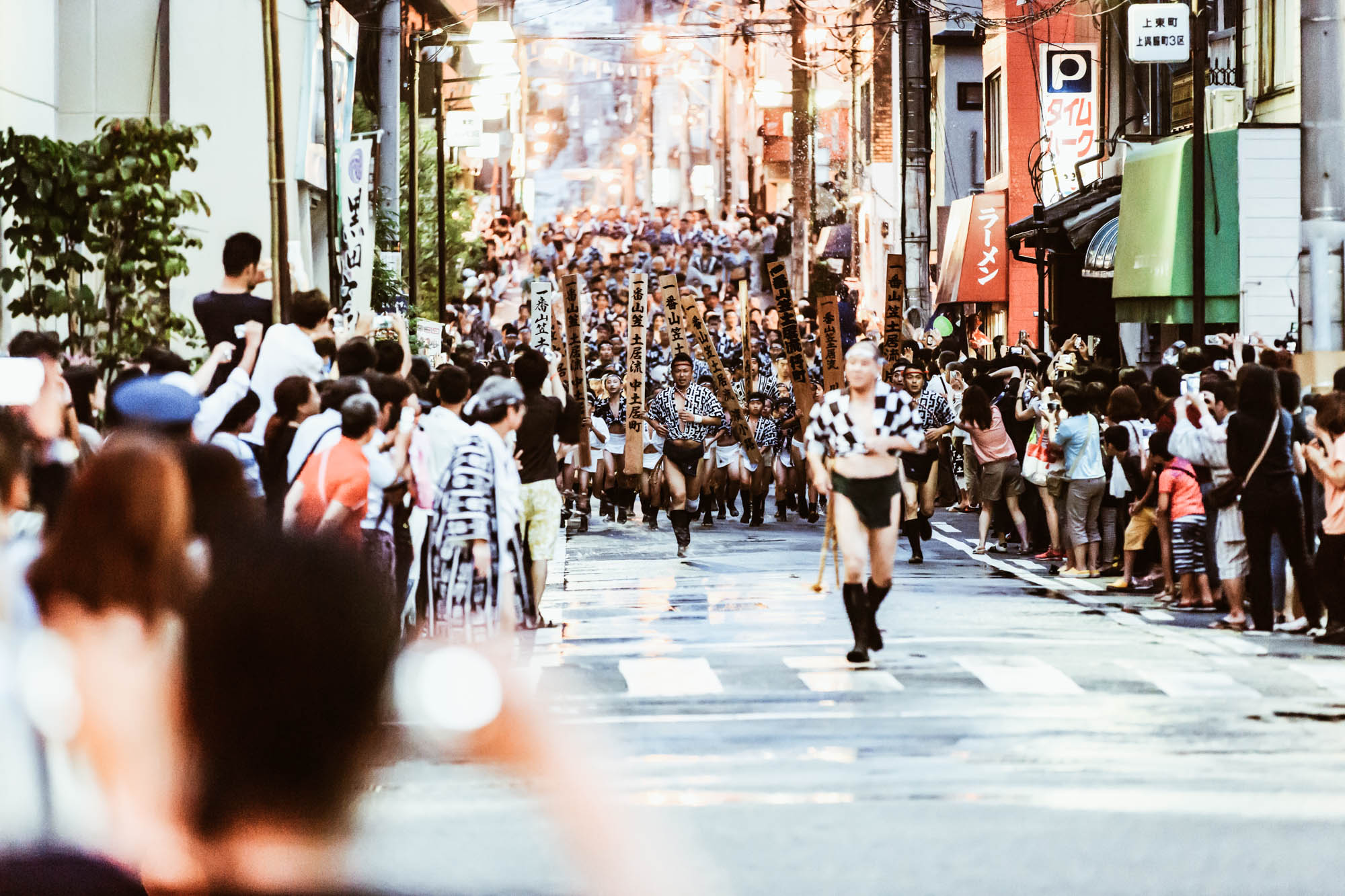
photo credits: shin7d, tak_orange
The last 3 days are the most challenging. During Shudan Yamamise the Kazariyama crosses the Naka river entering Fukuoka. During this event, the mayor and city personalities take a 1.2 km ride on the wagon. The penultimate day is that of Nagaregaki, the last training. Finally, on July 15th at 4.59 am Kushida-iri begins. The first wagon fires fast, followed by the second after 6 minutes and all the others every 5 minutes. The 5 km run will decide the winning team.
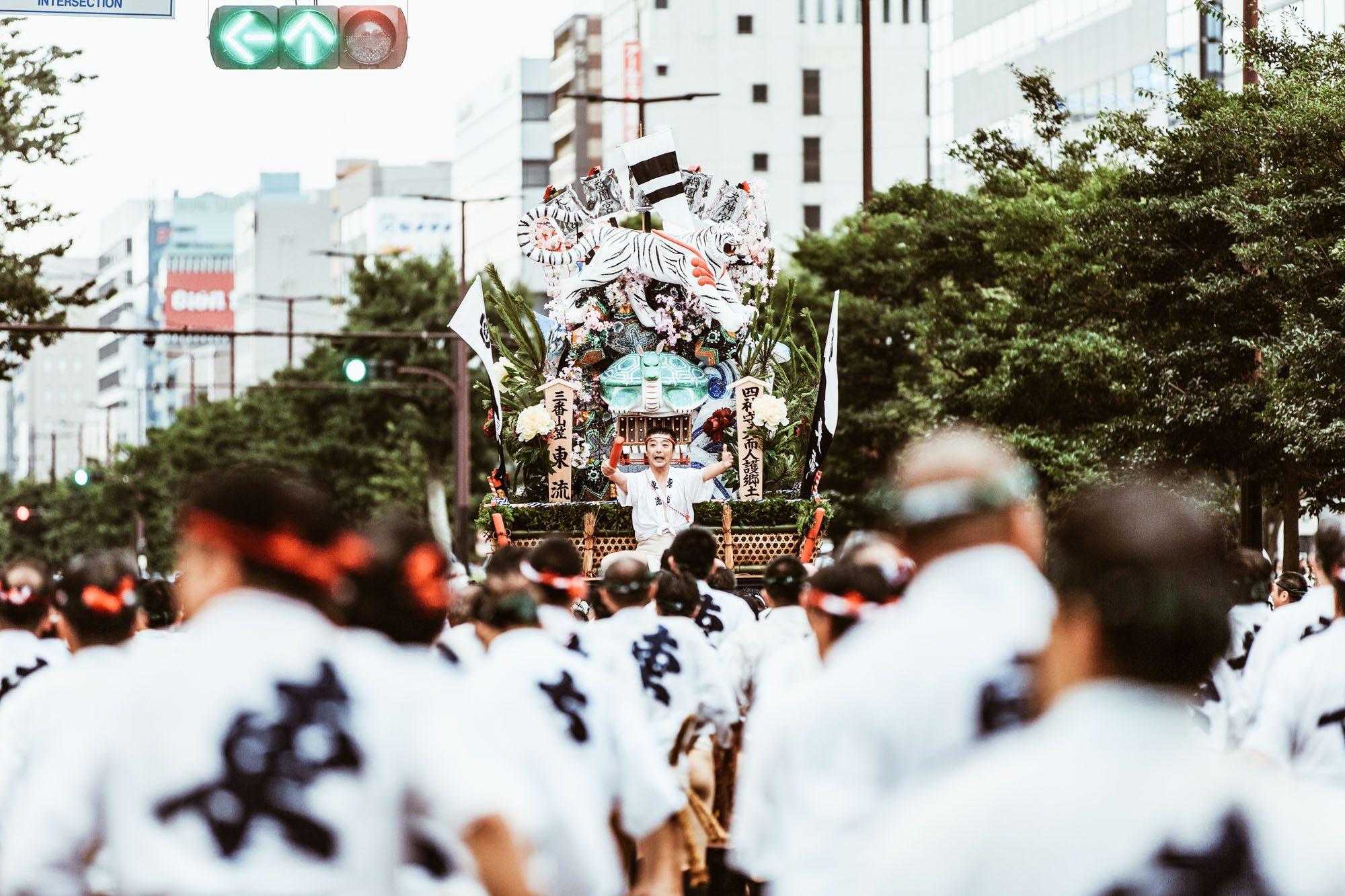

photo credits: tak_orange
Reach Hakata
The festival takes place in the Hakata district of Fukuoka. Kushida Shrine is a five-minute walk from Canal City Hakata or Gion Subway Station. Alternatively, you can reach Hakata station within a 15-20 minute walk. It is convenient to walk 10 minutes from JR Hakata station to the Kushida Shrine. Or you can get there with the Kûkô-sen subway line, get off at "Nakasu Kawabata" station and walk for 5 minutes.
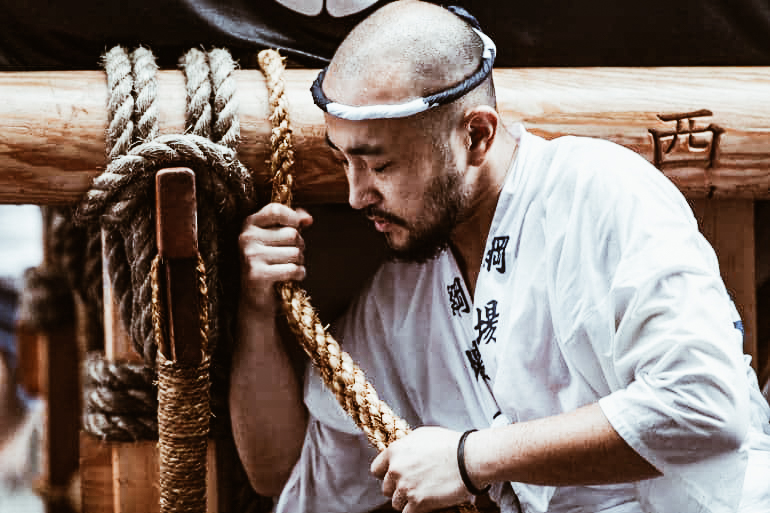
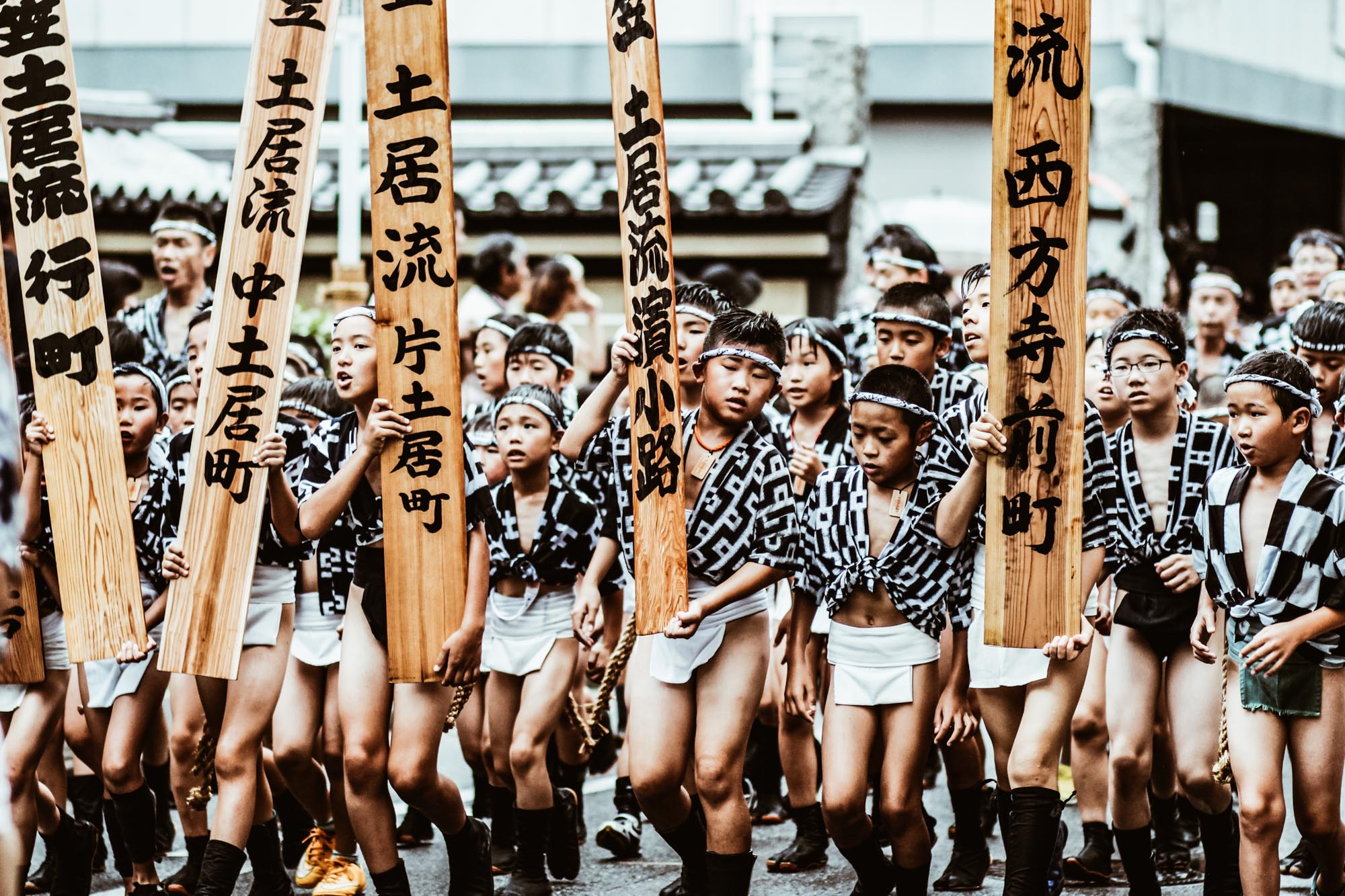
photo credits: japancheapo.com, otsukarekun
Japan History: Sakamoto Ryōma
Sakamoto Ryōma (January 3, 1836 - December 10, 1867) is still recognized as one of the most important figures of the Tokugawa Shogunate and one of the greatest heroes of the Edo period.
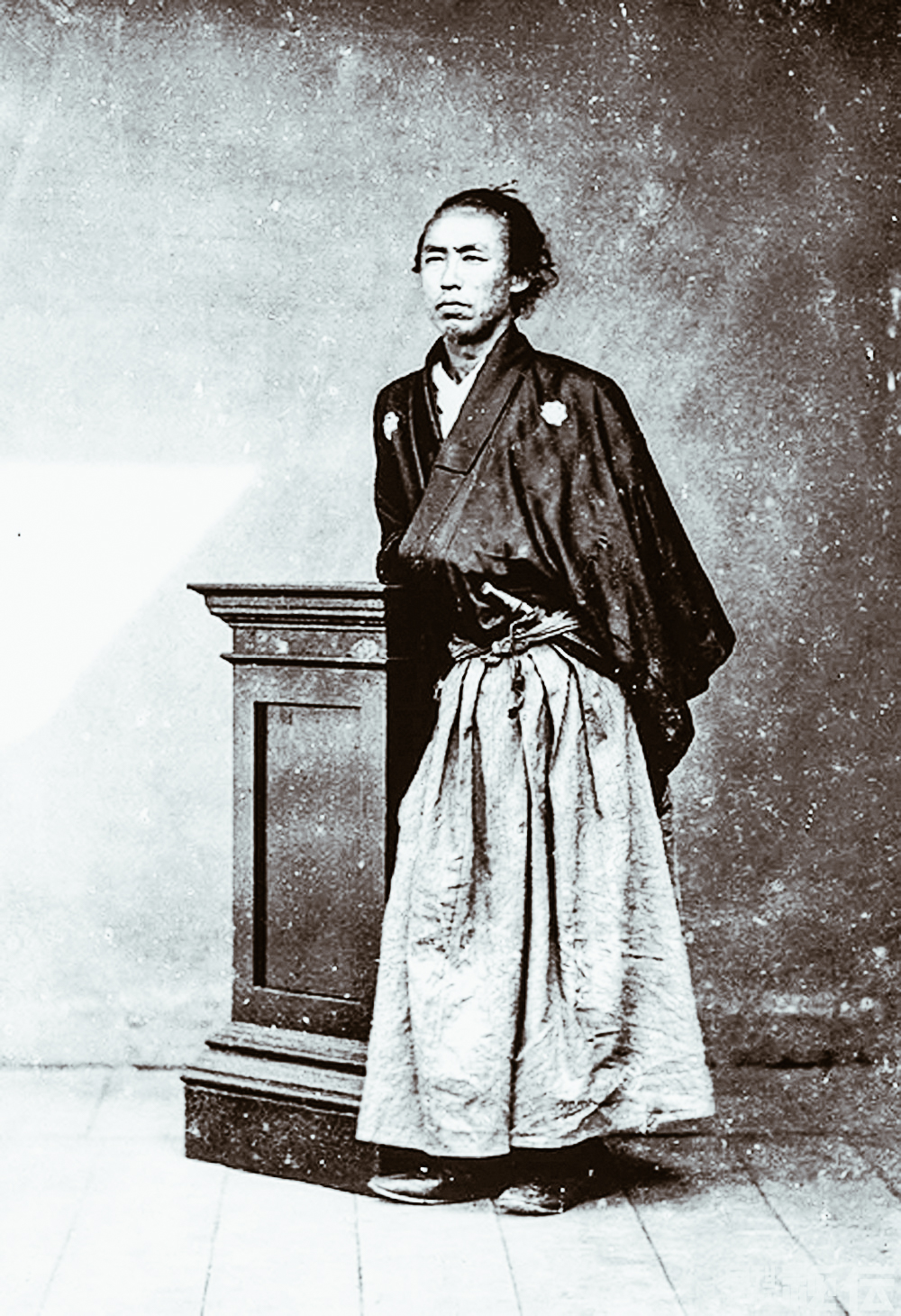
photo credits: budojapan.com
Early youth
He was born on the island of Shikoku, in the Tosa Han (toda's Kōchi Prefecture) on the fifteenth day of the eleventh month of Tenpō according to the Japanese calendar. His family was famous for being a great sake producer, thus obtaining the lowest rank of the Samurai category, the Gōshi (Samurai of the countryside). Tosa had a very clear separation between Joshi (high-ranking samurai) and Kashi (low-ranking samurai). Even in Sakamoto Ryōma's generation, the samurai degree of his family remained Kashi. At the age of twelve, Ryōma was enrolled in a private school, but it didn't last long, because his inclination to studies wasn't very strong.
Thanks to his older sister, he then enrolled in the Oguri-Ryu fencing classes when he was 14, after being bullied at school. In adulthood, he was a master swordsman. In 1853 he was allowed by his clan to go to Edo to improve his skills as a swordsman. There he enrolled as a student at Hokushin Ittō-ryū Hyōhō Chiba-Dōjō, where he received his diploma. He then became Shihan at Chiba-Dōjō and taught Kenjutsu to students along with Chiba Jūtarō Kazutane, his close friend. In 1858 he returned to Kōchi. However, four years later the Commodore Perry of the United States arrived with a fleet to force Japan out of its centuries-old policy of national isolation. In the same year, movements against foreigners, anti-Tokugawa movements and in support of the Emperor began to form.
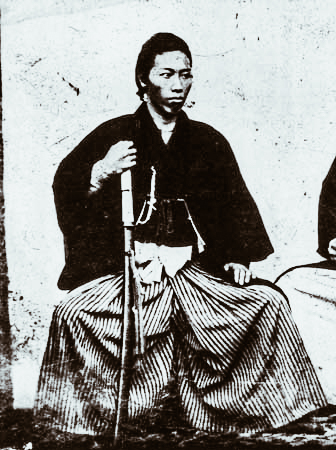
photo credits: jref.com
Sakamoto Ryōma and Takechi Hanpeita
His friend, Takechi Hanpeita (or Takechi Zuizan), organized Tosa's Loyalist Party "Kinnoto". Their political slogan was "Revere the emperor, expel the barbarians". The group consisted of about 2000 samurai, mostly of lower rank, who insisted on the reform of Tosa's government. As the group was not recognized, they began a plot to assassinate Yoshida Toyo, head of the Tosa domain. Ryōma participated in the plot without really supporting it.
Takechi asked for a revolution only for the Tosa clan, and Ryōma thought they would have to do something for all of Japan instead. He decided to leave Tosa and part with Takechi. In those days, no one was allowed to leave their clan without permission, on pain of death. One of Ryōma's sisters committed suicide precisely because of her brother's behavior.
In 1864, when the Tokugawa shogunate began to take a hard line, Ryōma fled to Kagoshima in the Satsuma Domain, under development as the main center for the anti-Tokugawa movement. Ryōma negotiated the secret alliance between the provinces of Chōshū and Satsuma. Satsuma and Chōshū were historically irreconcilable enemies, and Ryōma's position was seen as "neutral outsider".
Sakamoto Ryōma and the West
Ryōma was an admirer of democratic principles and studied the United States Congress and the British Parliament a lot. He loved these concepts so much that he took them as a model for the government of Japan after the Restoration.
Ryōma wrote the "Eight Proposals During the Expedition" while discussing the future model of the Japanese government with Gotō Shōjirō aboard a Tosa ship outside Nagasaki in 1867. Ryōma stressed the need for a democratically elected bicameral legislature and the drafting of a Constitution. Furthermore, he had considered the formation of a national army and fleet together with the regulation of gold and silver exchange rates. It is believed that Ryōma's proposals form the basis for the subsequent parliamentary system implemented after his death.
Sakamoto Ryōma and the Bakumatsu period
Ryōma pushed for national reform and left the domain, targeting Katsu Kaishu, a senior Tokugawa official.
When he finally managed to find his target, the latter calmly asked to be heard before he was killed. Katsu Kaishu then explained his plans to increase Japan's military strength through modernization and westernization. Instead of killing him as the plans were, Ryoma became his assistant. Together they created a naval force to be reckoned with.
Ryōma is often considered the "father of the Japanese Imperial Navy" because under the direction of Katsu Kaishū he worked to create a modern naval force. All this to allow Satsuma and Chōshū to stand comparison with the naval forces of the Tokugawa shogunate. Ryōma founded the private navy and the Kameyama Shachū trading company in the city of Nagasaki with the help of Satsuma.

photo credits: visitkochijapan.com
Chōshū's subsequent victory over the Tokugawa army in 1866 and the imminent collapse of the Tokugawa shogunate made Ryōma a precious figure for his former masters in Tosa. In fact, it is precisely in this period that he was recalled to Kōchi with many honors. Tosa's domain was anxious to get a negotiated agreement between the Shogun and the Emperor. This would have prevented Satchō's powerful Alliance from forcibly toppling Tokugawa and thus emerging as a new dominant force in the government of Japan. Ryōma again played a crucial role in the negotiations that led to the voluntary resignation of the Tokugawa Yoshinobu Shogun in 1867. With the arrival of the Meiji Restoration, thanks to Sakamoto Ryoma the Shogunate fell. Thus it was that Japan managed to come out of the 260-year Tokugawa Rule.
Ryōma often used the alias Saitani Umetarō (谷梅太郎) as he was often hunted by Bakufu supporters, like Shinsengumi members.
Sakamoto Ryōma's murder
On the night of December 10, 1867, Sakamoto Ryōma and his friend Nakaoka Shintaro stayed at the Omiya Inn in Kyoto. A group of assassins had gathered outside the inn. When one of them knocked on the door killing Ryōma's bodyguard, the rest of the group reached his room assassinating both him and Nakaoka.
The killers were never identified. However, members of the Shinsengumi and their leader Kondo Isami were accused and executed for the murder. Although the Mimawarigumi, members of the pro-Tokugawa group, confessed to the murder in 1870, no action was ever taken against them.
Sakamoto Ryōma's ultimate goal was not personal, but for the sake of Japan. His actions and beliefs have made him a national hero to this day.
Ryōma was a visionary who dreamed of an independent Japan without feudal traps. He was inspired by the example of the United States where "all men are created equal". He realized that to compete with an industrially and technologically advanced outside world, the Japanese had to modernize. It has also been seen as an intriguing mix of tradition and modernity. In fact, a symbol of these traits was his preference for the samurai dress with western footwear.
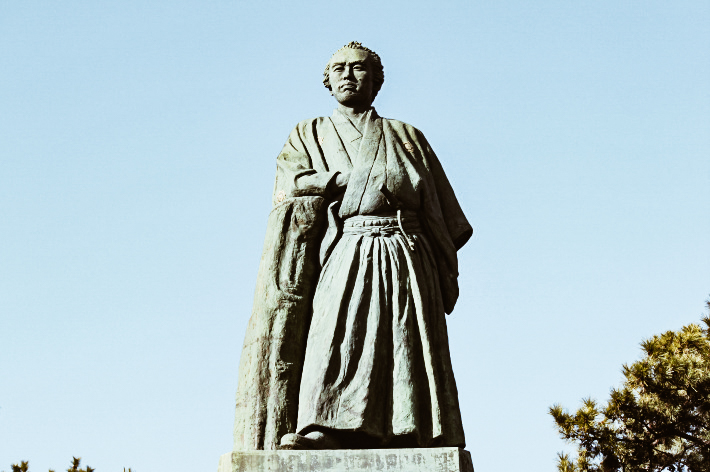
photo credits: tokyo2020.jp
Modern times
On 15 November 2003, the Kōchi airport was renamed Kōchi Ryōma Airport in his honor.
There is a Sakamoto Ryōma Memorial Museum (坂本龍馬記念館) south of Kōchi, with a large bronze statue of Ryoma overlooking the sea. The city of Kōchi has a number of Ryōma-themed attractions and places, including the Sakamoto Ryōma Birthplace Memorial. Furthermore, the Sakomoto Ryōma Hometown Museum shows the Kōchi center during Ryōma's childhood, including the relevant aspects that may have influenced his opinions. On November 15, 2009, the Hokkaido Sakamoto Ryōma memorial museum was built in Hakodate, Hokkaido.
Japan History: Torii Suneemon

photo credits: japanworld.info
Torii Suneemon (1540 - 1575) was a Japanese samurai of the Torii family, known for his courage and for the incredible value demonstrated in the battle of Nagashino (1575). Of his youth, it is known that he was an ashigaru soldier who served Okudaira Sadamasa, a vassal of Tokugawa Ieyasu and master of the castle of Nagashino.
On June 17, 1575, after failing to capture Yoshida Castle in Toyohashi, 15,000 of Takeda Katsuyori's samurai attacked Nagashino Castle in modern Shinshiro City, Aichi Prefecture. Nagashino with only 500 men, was built on top of a cliff, where the Ure and the Kansa rivers divided and served as a natural moat. It was a strategically important castle, guarding the Tokugawa against the threat of northern Takeda. Takeda Katsuyori, son of the famous Takeda Shingen, was busy reaching the capital, Kyoto, in an attempt to gain control of the nation.
To get to Kyoto, they first had to conquer Mikawa and Owari, lands held by allies Tokugawa Ieyasu and Oda Nobunaga. Nagashino Castle was important as it threatened the supply lines of the Takeda clan.

photo credits: asianartscollection.com
The Takeda forces had surrounded the castle, and the brave Torii volunteered to leave the castle, swim along the river and cut off the nets drawn near the enemy. Later he would have to walk 25 km from Okazaki and call Tokugawa Ieyasu. After warning him and requesting reinforcements, Torii quickly returned to Nagashino where he was captured as he tried to return to the castle.
The story tells of how Torii Suneemon had been tied and crucified with straw ropes in plain sight to his compatriots from Nagashino castle. "Tell them reinforcements will not come, tell them to give up the castle and get out!" one of his captors hissed. Torii looked up at the castle shouting: "Men from the castle of Nagashino... Don't give up! Ieyasu's men are coming! Wait a little longer!" Following his exploit, he was silenced by a spear stuck in the stomach.
The forces of the Tokugawa clan and the Oda allies eventually arrived on the scene a week later with 38,000 soldiers, creating an important turning point in the history of Japan and the samurai war, the battle of Nagashino and Shitaragahara.
It is interesting to know that a Takeda Samurai, Ochiai Michihisa, was so impressed with Torii's loyalty and courage that in a battle he displayed a flag with the image of the crucified Samurai. That flag is now kept in the Tokyo University library.
The martyr Torii was promoted posthumously to the samurai class and his family continued to serve the Okudaira clan until the end of the Edo period. He entered the history books as one of the most courageous and faithful Samurai.
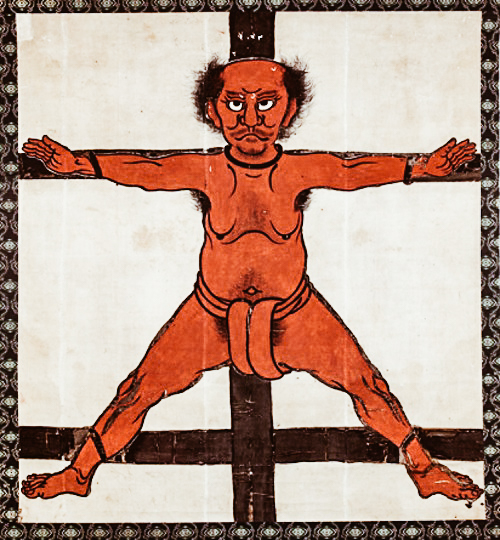
photo credits: japanworld.info
A curiosity: on the Lida line a railway station was opened bearing the name of the brave Samurai, a place not far from where he was crucified.
Japan Tradition: Sanja Matsuri
photo credits: Yoshikazu TAKADA
The festival of the three temples
The Sanja Matsuri (三社祭) is one of the most famous festivals, largest and "wildest" festivals in Tokyo dedicated to the Shinto religion. The festival is held in honor of Hinokuma Hamanari, Hinokuma Takenari and Hajino Nakatomo, the three men who founded the Sensō-ji temple.
The Sanja Matsuri is held on the third weekend of May at the Asakusa temple and the sumptuous parade involves three mikoshi (portable temples), dances, traditional music and lasts about three days.
Like most Japanese festivals, the Sanja matsuri is also a religious celebration dedicated to the spirits of the three men, founders of the temple. This festival seems to have been born in the 7th century and is also known as "Kannon Matsuri" and "Asakusa Matsuri" and with a different shape than today.
The modalities in which today's Sanja Matsuri is organized were established during the Edo period when in 1649 the shogun Tokugawa Iemitsu commissioned the construction of the Asakusa temple.
If you happen to be around Asakusa during the festival days, you can feel an atmosphere full of energy. People flock to the streets surrounding the Sensō-ji temple to the sound of flutes, whistles and taiko (traditional Japanese percussion).


photo credits: Atsushi Ebara, Yoshikazu TAKADA
The Mikoshi
The main attraction of this festival is the three mokoshi belonging to the Asakusa temple. These three elaborate temples in black lacquered wood have the function of being a miniature and a portable version of the Asakusa Temple. Decorated with sculptures and golden leaves, they weigh about a ton and are transported by long poles held together by ropes. For each mikoshi there is a need for about 40 people for safe transport and during the day, around 500 people participate in the transport of each temple.
The "parade" of these mikoshi is perhaps the most important moment of the day and the streets are crowded as they pass. As they are also transported, they are agitated and made to bounce strongly, because it is said that this leads to intensifying the power of the Kami inside and that it helps to increase luck in the respective neighborhoods.
While the three main mikoshi are the most important objects in the streets during the Sanja Matsuri, there are about 100 other smaller mikoshi scattered in the neighborhood on Saturday. Many of these temples are also transported by women or children.

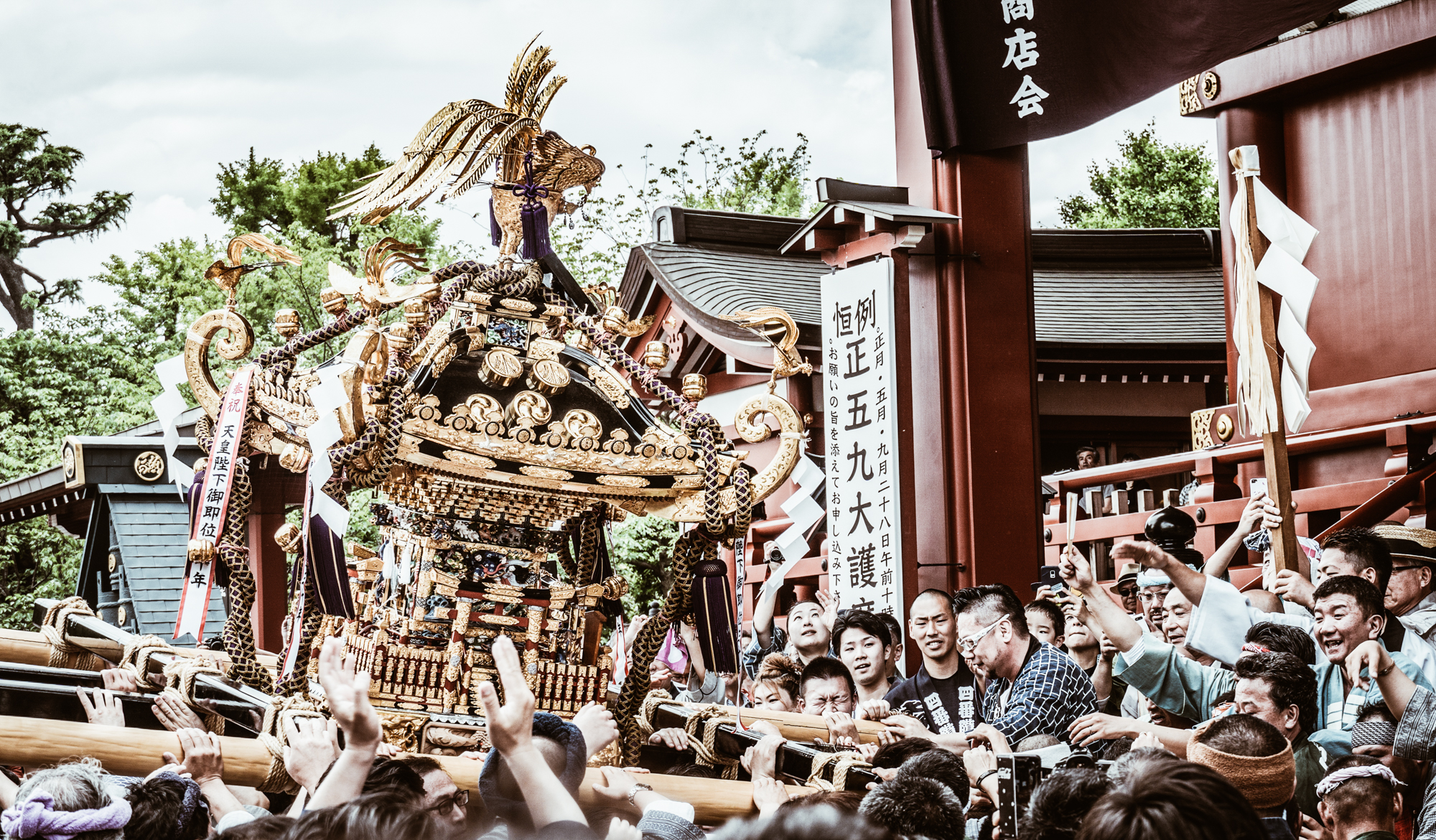
Day after day
The Sanja matsuri, is a festival that lasts several days and begins on Thursday with an important religious ceremony. This function requires the priest responsible for the temple to perform a ritual that makes the Kami of the three founders of the temple move from within into the three mikoshi. The latter will then be the protagonists of the parade that will last all weekend in Asakusa.
By opening the three small doors of the mikoshi the three spirits are invited to enter the miniature temples where they will stay for the duration of the festival. The interior of these mikoshi is also concealed from the public by a thin cotton curtain.

photo credits: Yoshikazu TAKADA
But the actual parade begins on Friday, known as Daigyōretsu (大 行列) which literally means "great parade".
The famous procession goes down via Yanagi Street and continues to the Nakamise-dōri up to the Asakusa temple. This festival is also well known for the sumptuous costumes of the participants, but also for the geishas and city officials who wear hakama, traditional Japanese clothes.
In the evening, six mikoshi from the most central neighborhoods are sent in procession on the shoulders of several dozen people.


photo credits: Hong Seongwan, Yoshikazu TAKADA
The following day, Saturday, about 100 mikoshi belonging to the 44 districts of Asakusa gather at the Kaminarimon and then leave on parade via the Nakamise-dōri in the direction of Hōzōmon. Once here they pay their respects to Kannon, the goddess of Mercy. Later, the mikoshi are taken to the Asakusa temple where the Shinto priest blesses them and purifies them for the coming year. Once the ceremony is completed, these small portable temples are transported back to their respective neighborhoods.
However, the most important event of the Sanja Matsuri takes place on Sunday. It is in this day in fact that we can see the parade of the three mikoshi belonging to the Asakusa Shrine. They march along the Nakamise-dōri to arrive at the Kaminarimon on Sunday morning. These three mikoshi enclose the three spirits of the three founding men of the Sensō-ji temple and, during the final day of this festival, they come to visit and bring blessings to the 44 districts of Asakusa.
When evening arrives, the three mikoshi find their way back to the Asakusa temple creating another great procession that lasts until late at night.


photo credits: ageless foto, Yoshikazu TAKADA
Yakuza Show
This festival of monumental size, also allows to mix fringes of the population that usually remain very detached. It is indeed common to find the Yakuza performing in fundoshi, without shame or fear, proudly showing their tattoos. In the eyes of a westerner, not accustomed to Japanese culture, this could almost seem like a comic scene. However, don't dare to laugh if you don't want bad luck to hit you!


photo credits: Hong Seongwan, syasya_akemi
Japan Tradition: Kanda Matsuri
The festival held on odd-numbered years
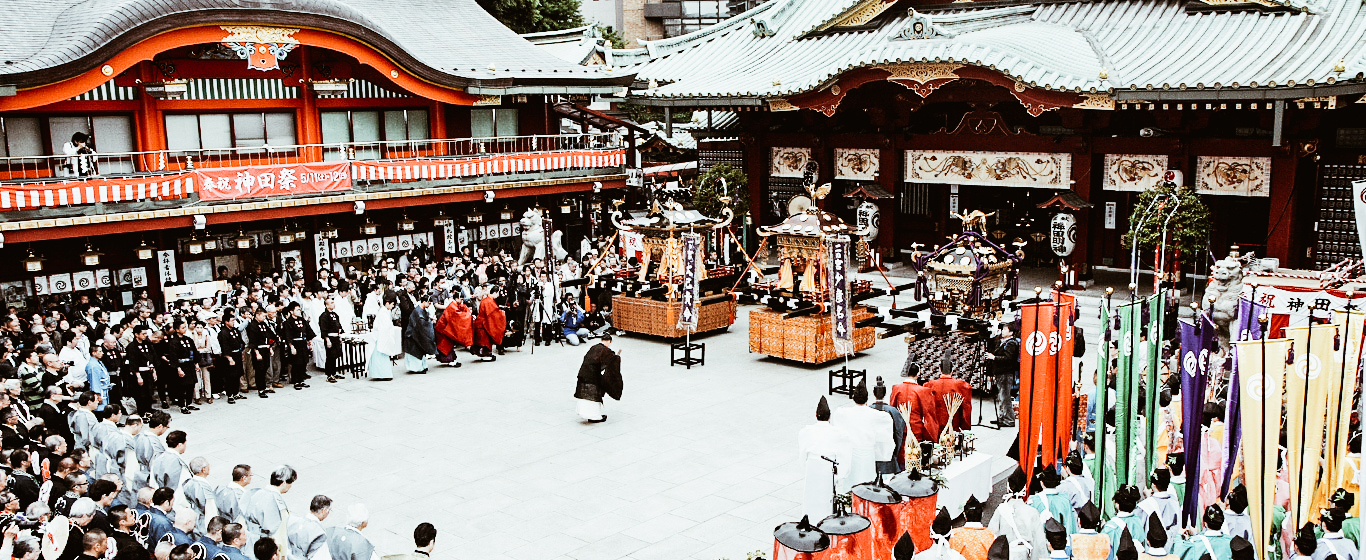
photo credits: dydo-matsuri.com
In the middle of May on every odd-numbered year, the Kanda Matsuri (神田祭) takes place in Tokyo’s Kanda. Together with the Sanno Matsuri and the Fukagawa Matsuri, Kanda Matsuri is one of the three most important Shinto festivals being held in Tokyo. It is also one of the three largest festivals of Japan together with Osaka’s Tenjin Matsuri and Kyoto’s Gion Matsuri.
The origin of Kanda Matsuri dates back to the Edo Period (1603-1867), when the shogun Tokugawa Ieyasu ruled over Edo, now modern day Tokyo. It is for this reason that Kanda Matsuri is also sometimes known as Tenka Matsuri (Tenka meaning shogun).
The celebration of this festival also doubled as a demonstration of prosperity under the new regime.


photo credits: xin beitou, Atsushi Ebara
At the same time, the Sanno Matsuri took place to celebrate the new political center and its rulers. Because of the long and extravagant preparations, competition between the two festivals grew, and eventually, it was decided to celebrate them in alternate years. Under this new rule, Kanda Matsuri was to be celebrated in the middle of May on odd numbered years , while the Sanno Matsuri would be celebrated in the middle of June on even numbered years.
Today, Kanda Matsuri is celebrated in honour of the gods residing in the Shinto shrine called Kanda Myojin that can be found nestled among modern buildings in one of the most exclusive neighbourhoods in Tokyo, Chiyoda ward. The shrine is dedicated to 3 deities: Daikokuten, the god of good harvest and matrimony, Ebisu, the god of fishermen and businessmen and Taira no Masakado, a revered samurai of the 10th century who was deified.

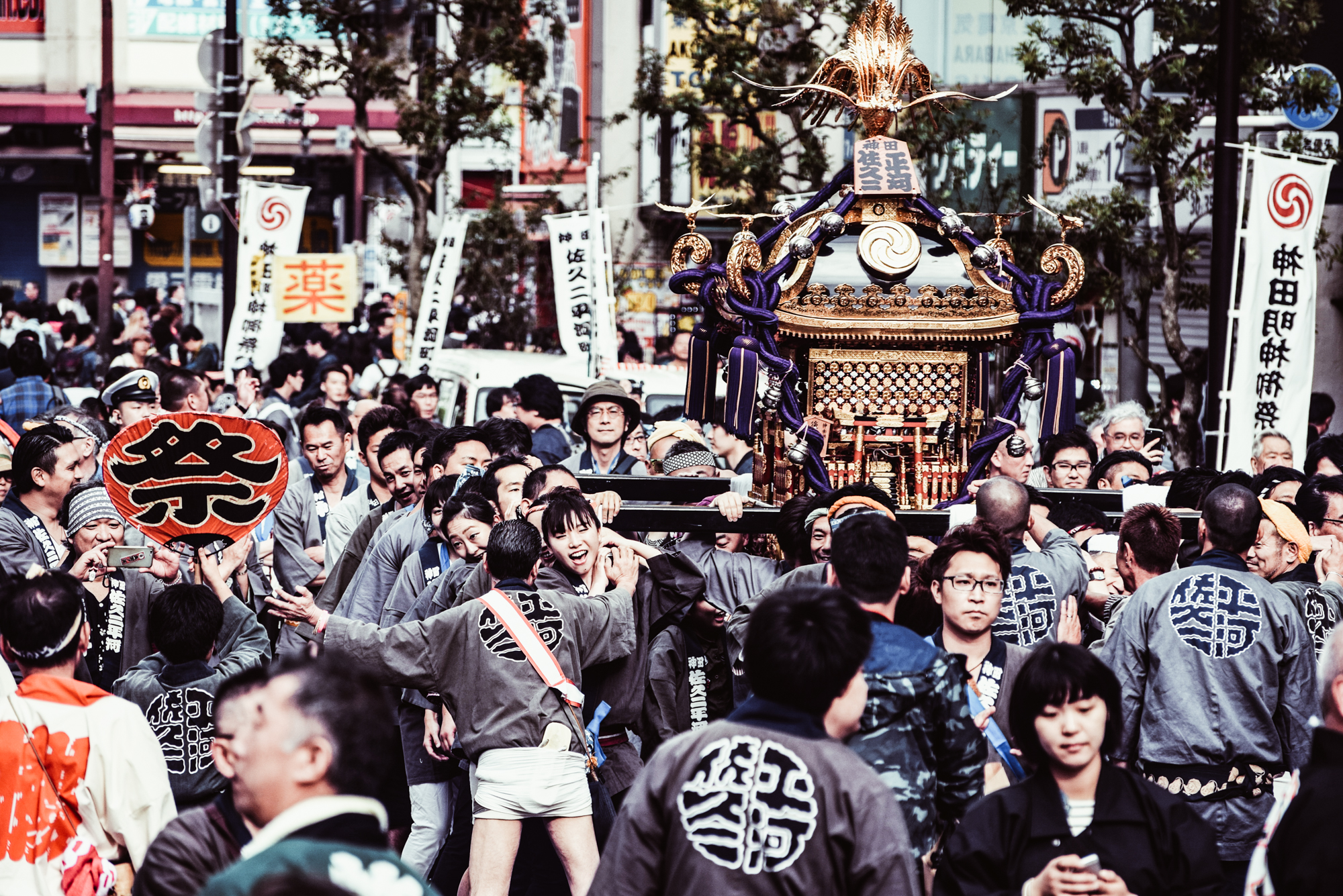
photo credits: rove.me, bill ben
Celebrating prosperity and good fortune
Like most other festivals, shinto rites are an essential part of the preparations. On the eve of the main procession, the kami (gods) of the shrine are invited to enter the three finely decorated mikoshi (portable shrines) through these rituals. At 8 a.m. on the day of the festival, these mikoshi are paraded through the streets of Kanda, continuing down to Nihonbashi, followed by Otemachi, and finally Akihabara, before returning to the temple at around 7 p.m. This procession is typically accompanied by an immense crowd of people, along with musicians, priests riding on horseback and many other participants wearing colorful, traditional clothes.
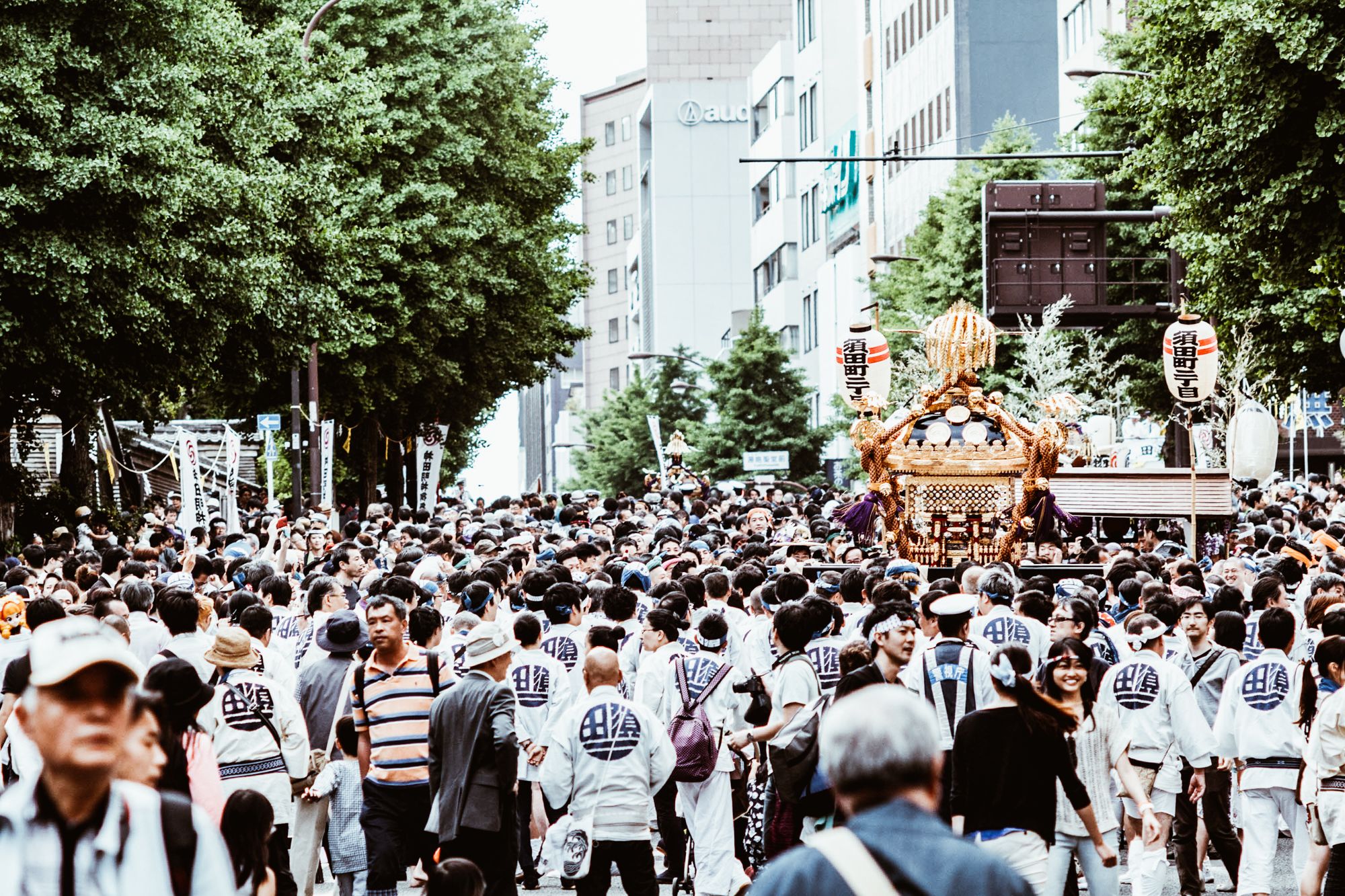

photo credits: nlgwest , Kemy Shibata
At the same time, there is a smaller three-hour long secondary procession being held. This is attended by men on horseback dressed as samurai, characters from folk stories, musicians, and dancers who depart from Arima Elementary School in the early afternoon and proceed north towards the Kanda Myojin shrine.
The next day following the festival is dedicated to the procession of mikoshi from various neighbourhoods in the Kanda and Nihonbashi district. Each of them contains an ujigami, guardian deities who, on this occasion, are housed in mikoshi to bless the residents of the area as they are paraded through the streets.

photo credits: Eugene Kaspersky
Many small curiosities
Those who were born and raised in Edo were called “Edokko”. Edokko had a peculiar personality and they were said to be very open and cheerful people. All these characteristics were, and still are, reflected in the Kanda Matsuri, a festival full of energy.
The procession with all its main elements also recalls the celebrations for Tokugawa's victory in the battle of Sekigahara, which cleared the path to the shogunate that led to a long period of peace and prosperity in Japan. Originally, townspeople would dress up and give thanks to the shrine through lavish performances of Noh theater.

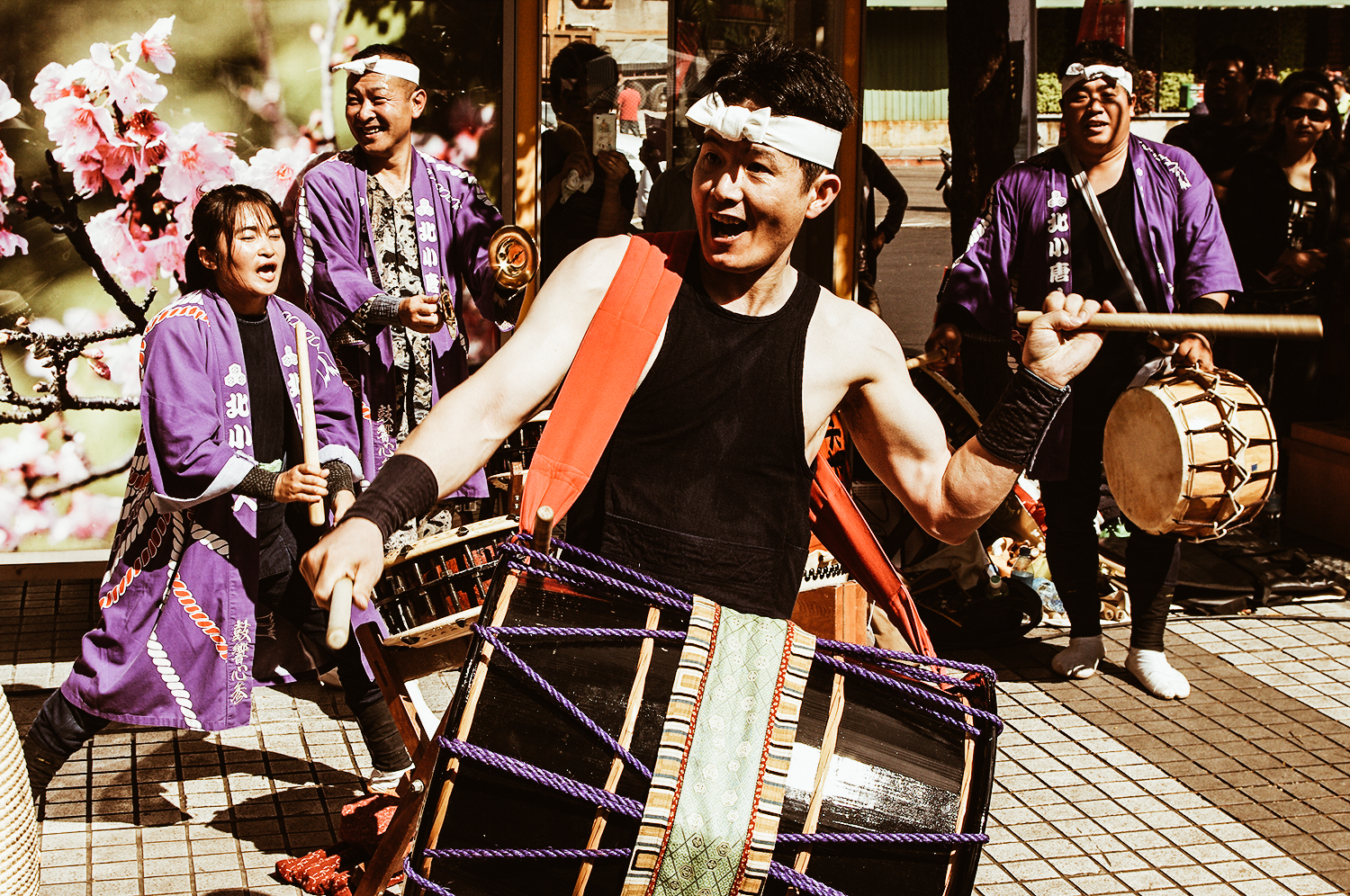
photo credits: tokyoexcess.blogspot.it, xin beitou
During the Edo period, the parade with its beautiful decorations would pass by Edo Castle, giving common people a rare chance to enter its grounds.
Most of the original floats, which had been used since the early days of the festival, were destroyed in the Great Kanto Earthquake of 1923 and in the bombing of WWII.


photo credits: viajejet.com, fastjapan.com
Japan Tradition: Aoi Matsuri
The Hollyhock Festival
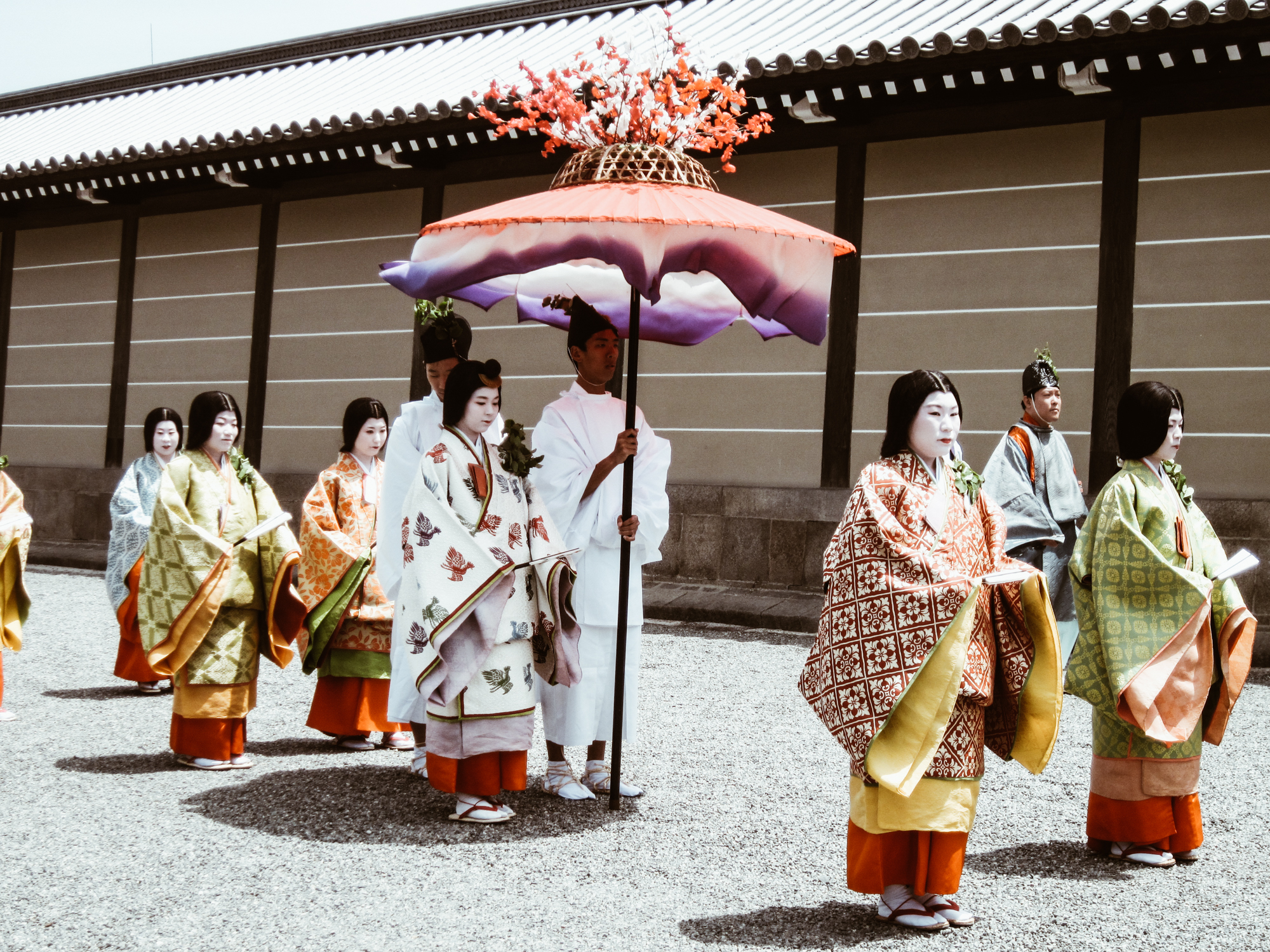
photo credits: mutabi.wordpress.com
One of Kyoto’s three most well-known festivals, Aoi Matsuri (葵祭) takes place every year on the 15th of May. The name of this festival derives from the hollyhock leaves that participants in the festival’s parade carry with them as they walk down the designated route. In Japanese, “Aoi” (葵) refers to the “alcea rosea” or, as the namesake of this festival, the “hollyhock”. This plant produces brilliant colours and beautiful flowers, and its leaves are believed to have the power to prevent natural disasters.
The main attraction of this festival is a grand parade that involves more than 500 people dressing up in the aristocratic styles of the Heian period (794 - 1185 CE).
This annual parade starts from the Imperial Palace, and the participants will walk down the road until they arrive at Kamo Shrine. This name refers to the shinto sanctuary complex that consists of Kamigamo shrine and Shimogamo shrine.


photo credits: amanohashidate.jp, Nobuhiro Suhara
The Origins
The festival first started during the reign of Emperor Kinmei (539 - 571CE), when a period of heavy rains ruined the harvest and an epidemic spread through the country.
It was believed that these tragedies came about because the Kamo deities wanted to punish the people. Thus, the emperor sent a messenger to the temple with offerings and to perform various rituals in order to appease these deities. Part of these rituals also required the riding of a galloping horse.


photo credit: Alex Hurst, Clement Koh
This became an annual event with the intention of preventing further disasters. However, during the reign of Emperor Monmu (697 - 707CE), it was suspended due to the huge amount of people joining to watch the rituals. In the 19° century, Emperor Kanmu established the seat of the imperial throne in Kyoto and this represented the beginning of the Heian period in Japanese history. The emperor recognised the Kamo deities as protectors of the capital and reestablished the Aoi Matsuri as an annual imperial event. The festival was sometimes discontinued in some periods of Japanese history, especially during World War II, but it was actively resumed in 1953. The Saiō-Dai tradition in this festival was also initiated in 1956.
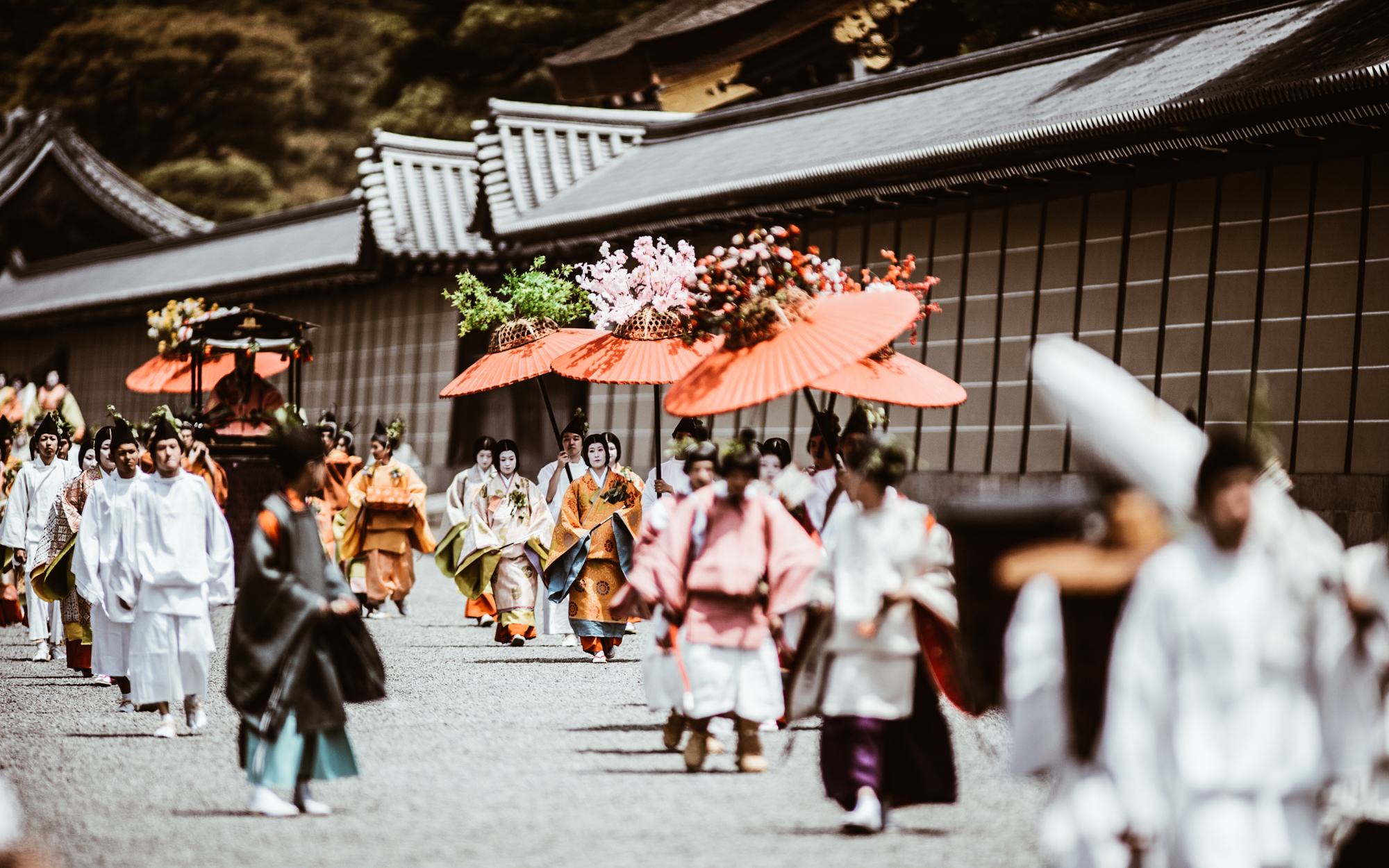
photo credits: regex.info
The characters of the Festival
There are two main characters in the Aoi Matsuri: the Saiō-Dai and the Imperial Messenger.
The Saiō-Dai is a woman chosen from the sisters and daughters of the emperor to dedicate herself to the Shimogamo Shrine. The role of the Saiō-Dai is to maintain spiritual purity and represent the Emperor at the festival. Today the Saiō-Dai is chosen from all unmarried women of Kyoto. She wears twelve layers of silk robes (jūnihitoe), finely colored in the traditional style of the Heian court. To maintain ritual purity the Saiō-Dai has to go through several ceremonies of purification before the festival’s parade.
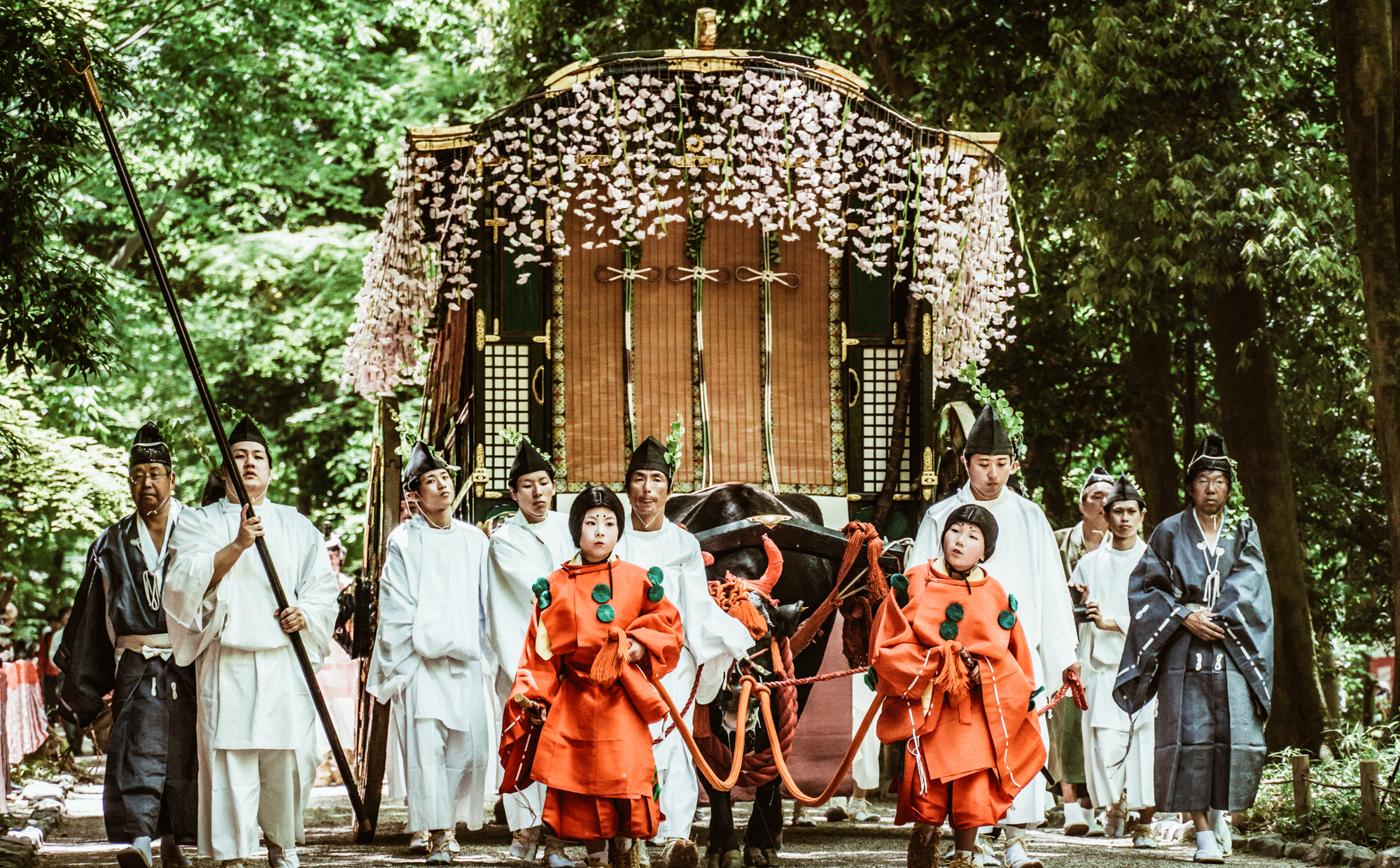

photo credit: Hong Seongwan
The Imperial Messenger, on the other hand, conducts the procession of the festival by riding a horse. During the Heian period, he would be a Fifth-Rank courtier holding office of middle or lesser capitan. He was also typically a man destined for high office. His role was to read the imperial edict and present the emperor’s offerings. During the Heian period, the Saiō-Dai and the Imperial Messenger would be accompanied by ten dancers and twelve musicians.

photo credits: Hisanori
Celebrations Today
The parade starts at 10:30 a.m. on May 15th at Kyoto’s Imperial Palace. It then slowly departs for two important stops: the Shimogamo Shrine, where the procession should arrive at 11:15 a.m., and the Kamigamo Shrine, where they will arrive at 3:30 p.m. The Saiō-Dai and the Imperial Messenger perform their rituals at these stops. The Saiō-Dai pays her respects to the deities, while the Imperial Messenger intones the imperial rescript, praising the deities and requesting their continued favor.


photo credits: Slugicide, find-your-jpn.com







